The official organization for students at the Carnegie Mellon School of Design.
Don't wanna be here? Send us removal request.
Text
Sophia@Capital

Hi! My name is Sophia Kim, and I am a rising junior majoring in Communication Design and minoring in Sound Design (ノ◕ヮ◕)ノ*:·゚✧ During the summer, I interned at Capitol Music Group under the Hollywood & Vine Intern Program. I got the opportunity to be part of the Creative Services department during my 9 weeks there.
First: Why I Chose the Music Industry
Coming from Atlanta where it is filled with various music genres and fashion styles, I have always been interested in art and music, especially the history and culture behind hip hop. Once I entered CMU, I noticed the many similarities design and music has. Through the various ways of communicating emotions, design and music gave me the opportunity to fuse those two passions with fashion, art, and culture.
Getting the call from Capitol Music Group, I was very excited to work at an iconic record label that has produced many of my favorite artists’ works (i.e. The Temptations, Banks, BJ the Chicago Kid).

Internship
The Hollywood & Vine Intern Program is not solely focused on design. There are various types of departments: Brand Partnerships & Sync, A&R, Sync, Video, Creative Services, etc. Each department had two interns. I was in the Creative Services department with one other intern, Rachel, who studies neuroscience and advertising.
The Creative Services department helps to shape the visual identity of Capitol’s artists from styling and logos to album packaging and visual campaigns. Through various channels including peer recommendations, preexisting relationships, Instagram, and Behance, the Creative Services department finds and contacts creatives for Capitol’s artists to work with.
To streamline and diversify this process of finding creatives, Rachel and I were tasked with creating a platform that makes connecting these creatives and the Creative Services department within CMG easier. With the help of our mentor, Nicole Frantz who is the head of the Creative Services department, we were able to meet various types of creatives (makeup artists, graphic designers, stylists) and gather research.
With this research, we created an initiative that consists of three parts: generating buzz online through Capitol’s social media platforms, developing a proprietary database, and cultivating relationships through community engagement (conferences and events).
Apart from the main project, I created a zine that focuses on the interns, their projects, the departments they worked in, and why they want to work in the music industry. Also, I designed t-shirts for the 2019 Hollywood & Vine Intern Program.
At the end of the internship, Rachel and I had to present our project in front of the entire company. This required a great amount of practice and prepping for the big day.
My work with Capitol Music Group is under NDA, so I cannot go into detail or show any visuals of the projects (if you want to know more, please don’t hesitate to contact me: [email protected]).
Working at Capitol Music Group
I got to work at the historic round building Capitol Music Group calls its headquarters. Everyone in the building has great amounts of respect and excitement for the rich history Capitol has to offer.

Throughout the internship, we had speaker series with various executives and department heads. It was interesting to listen to each of the speakers’ life stories and the different tasks each department takes on.
At the end of the internship, there was this week long event called Capitol Congress. The first day was the interns presentations, which took place in Studio A and B (these studios are places where Frank Sinatra and Nat King Cole recorded). The second day was an all day event at Hollywood’s ArcLight Theater where Capitol recognizes the various sub-labels’ and artists’ accomplishments. Many guests came to the event and spoke, such as the founder of the Motown record label Berry Gordy, the founders of Quality Control Music Pee and Coach K, and the founder of S.M. Entertainment Lee Soo-Man. For me, I was in complete shock to see these people in person, especially the founders of the record labels/entertainment companies that I have known throughout my life.

The third and fourth days were team bonding days, which helped me meet people in various types of departments and locations.
Reflection
Overall, this internship has taught me a lot, starting from teamwork to getting myself out of my comfort zone. In the beginning of the internship, I was somewhat nervous by the fact that I was the only intern who studies design and that I wouldn’t have a design community to rely on. However, I became friends with one other intern Nikol who studies business and design. We were able to help each other although we were in different departments. I realized that a design community wasn’t the only community I needed, but I found people who I could rely on and learn from throughout my time at Capitol, such as the Innovation department interns Rachel G and Jakeob who built an app using code, the CFO of Capitol Music Group Geoffrey Harris who I talked to about design thinking.
This internship was a great introduction to what industry life is like and how I can apply my knowledge to this type of industry. I am so grateful that I got this opportunity to apply what I have learned at school to conversations in the office and out of the office. Also, I am glad that I got to meet all the people I have met, and through that, I got to build unforgettable friendships.
o(╥﹏╥)o

5 notes
·
View notes
Text
Andrea@Beyond
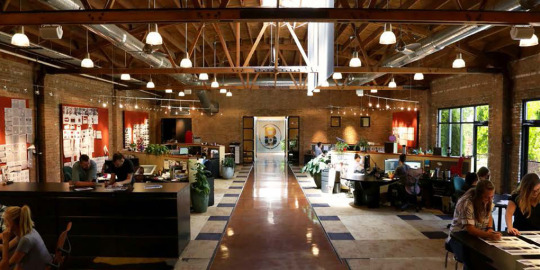
Hi! I’m Andrea, and I’m a design sophomore currently pursuing the products and environments tracks! This past summer, I spent ten weeks interning at Beyond Design; a product design and development firm in my hometown (and the best city on Earth), Chicago. Even though I didn’t feel too much pressure to find an internship the summer after my first year, I felt like the small team at Beyond would be a great way to dip my toes into the product design realm and see if it could better inform my track choices for sophomore year.
Before going into my main takeaways from my summer, here is a little bit about Beyond:
It’s a very small team (around six full time employees) consisting of two industrial designers, a UIUX designer, an engineer, and a marketing/account manager.
As a product development firm (as opposed to a strictly product design firm), there is really no limit to the types of products or projects that Beyond works on. It can be anything from household appliances to toys to apps.
It has a BEAUTIFUL studio and courtyard located in the Ravenswood neighborhood of Chicago.
The Beyond Design team has always prided itself on a learning culture for interns, so this summer, I was with four other interns (mostly in engineering or design-adjacent fields).
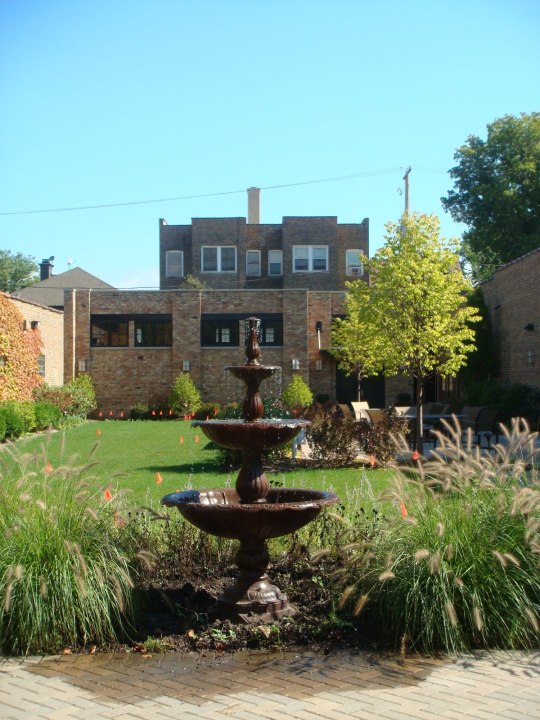

About the internship
Although I can’t go into too many specifics on the actual projects I worked on at Beyond, I can say that as an intern, I definitely got to do a little bit of everything. One day I could be making a presentation or pitch deck for a client, while the next I could be making concept sketches or low-fidelity prototypes. While it could be overwhelming to jump from project to project and not always be able to carry a project to completion, it also helped me become faster and sharper when it comes to idea generation, as well as allowing me to participate in many different stages of the design process.
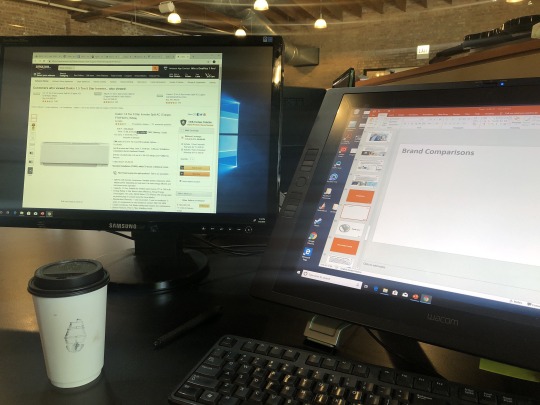
In fact, I kind of progressed through the internship in a similar manner that a project progresses from start to finish. I started off doing a lot of the preliminary research that goes into the early phases of a project, including client pitch decks, moodboards, and market landscapes, but as the weeks went on, I moved more into the idea generation (sketching and modeling) phases of projects, with the final week being an entirely self-directed research presentation.
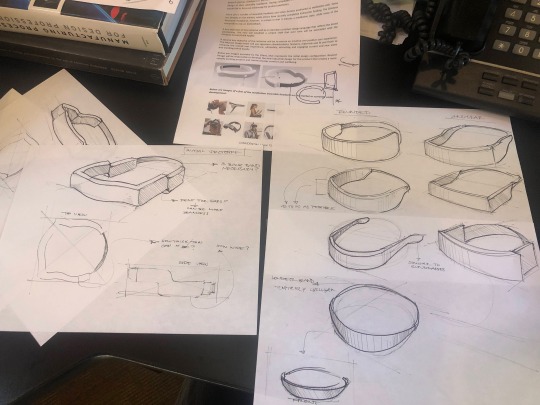
Highlights and takeaways
Overall, I’ve thought a lot about what my main takeaways were (both good and bad) from my internship and this is what I came up with:
Sometimes an inexperienced perspective is a very useful one: I think at the beginning of the internship I was somewhat scared to interject my ideas because I didn’t have the experience to back them. However, as I gained confidence and began to question certain things or push the bounds of the projects more and more, I realized that my less restricted or inhibited ideas (while sometimes unfeasible) could actually be helpful for the leads to break out of the “normal” way of doing things.
Absorb everything: I think it was important for me to have designers to look up to and learn from, but also to have experienced certain things I didn’t agree with (whether that be a design choice or something with regards to the management of the company) because in the end, all of those things ended up being good learning experiences, helping me create a reference point for myself for future jobs.
Have a good understanding of a company’s design identity: This might be something that was very specific to me, but while working I did find that there were many times when my design preferences or style did not align very well with those of the company and while I kind of adapted my style as best I could, I didn’t realize how difficult that type of compromise can be. So that might be something I still have to work on, or it could also mean that in future job searches, I should be sure to identify the kind of design philosophy that interests me the most.
Small teams have their pros and cons: After working at Beyond, I noticed a lot of things about working on a small team that I had never considered before. I would say that the one-on-one attention and the overall working environment, especially as an intern, is a lot better at a smaller company, but at the same time, there are less opinions being taken into account which could sometimes make compromising harder.
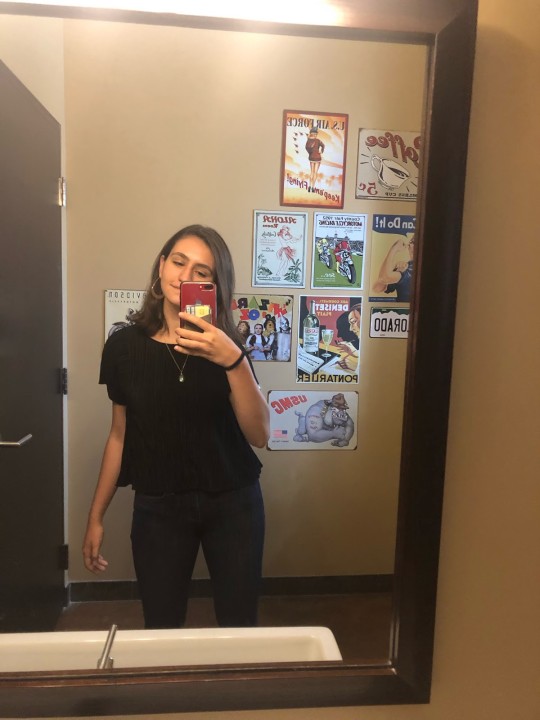
I think there’s a lot more I could say about my experience at Beyond Design, but this is already very long so I will leave it at that. All in all, I am very happy with my choice to intern this past summer and I have already begun to see a lot of the practical lessons I learned playing a role in my classes this year. If you have any questions about Beyond or anything else, feel free to reach out!
5 notes
·
View notes
Text
Jay@Samsung
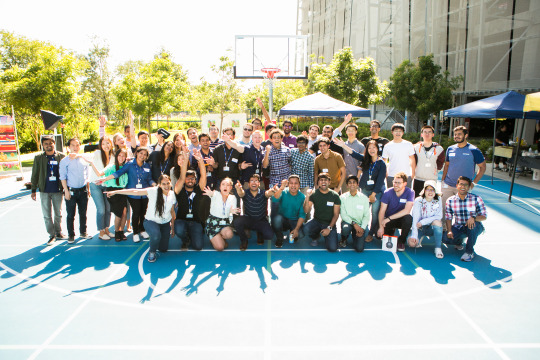
Intern Fiesta (190619)
Hi, my name is Jay and I am a 2nd year student in Master of Design program. During this summer, I had the opportunity to work for ID8 Innovation Lab Team of Samsung Strategy & Innovation Center (SSIC) as a UX/Product Design Intern.
SSIC building and views
The internship was 12 weeks long and there were 2 design interns (including me) and 2 engineering interns for our team. I was so excited to spend my summer there because it was my very first time to visit Silicon Valley! I would say that I have learned and enjoyed a lot during the internship, not only about design but also about experiencing new places and new people.
What is ID8 Innovation Lab?
ID8 Innovation Lab is more like a small design agency in a huge company. The team is composed of a small number of designers and engineers who collaborate closely. The team focuses on more exploratory and innovative projects using emerging technologies and proposes design solutions that could be implemented in the next 5 years.
The main goals of the projects are presenting the concept and working prototypes to other departments, such as Samsung Electronics, clients, or other stakeholders. We do not mainly focus on refining the designs in the pixel levels that is ready to be launched in the market, but rather, we care a lot about the creative-ness and novel-ness. Unlike other design teams, our solution does not limit to one specific platform because our team has capabilities of designing any solutions from physical to digital products. Thus, I could feel more freedom when framing problems and developing concepts. Also, it was exciting to see actual working prototypes that our design team came up with and proposed to engineers.
How was my experience in the team?
I could experience different environments that might have been difficult to experience in other typical design teams. Since there were only a few designers and each of them has their own expertise, such as industrial design, UX design, and visual design, they are all required to independently represent their fields. This environment was a bit challenging for me at the beginning because my mentor and I were the only UX designer in our team so that there were no other people I could rely on about UX part other than him. But at the same time, I could have greater voice as well. For example, I could lead the domain presentation for one of the biggest projects and made key decisions throughout the process of preparing and conducting user interviews and synthesizing the concept after ideation sessions. Delivering a presentation in front of the entire team including CTO and project managers and deciding the project directions required huge responsibilities but it also made me motivated and passionate.
The mentor closely supported me to get used to the team culture and life in South Bay area, by sharing his experiences and giving advice. He helped me improve design expertises such as white boarding or presentation communication skills.
What did I do other than work?
I learned a lot outside the company as well. SSIC has a well-coordinated internship program. The total number of interns for this summer was around 70, and there were many chances to socialize with others. Most of them have an engineering background, and I could learn new perspectives and lives that I haven’t thought about before. Thanks to the internship program, I could also experience key places in the Bay Area. Especially, we went to Santa Cruz Beach and Great America altogether, where I could not visit by myself. We enjoyed our time there and make great memories with friends. I could learn a lot about lives in the Bay Area and Silicon Valley.
Santa Cruz Beach (190628)
Half Moon Bay Beach (190715)
Great America (190725)
What I should emphasize is the food in cafeteria. There were a variety of options but the Korean and Japanese food were the best. Also, I could order specific menu that I want to eat. For example, I could order a steak with fruits and an egg fry on it.
Overall, I really enjoyed working with ID8 team and living in California. I was able to meet people from various backgrounds, which helped I broaden my horizon not only as a designer but also as a person. I appreciate Design League for giving me an opportunity to share my experience and I hope my reflection could be helpful to many future designers/interns at SSIC or Silicon Valley.
6 notes
·
View notes
Text
Kevin@Wunderman
Hi everyone! I’m Kevin, a rising senior in the communications track. This summer I interned at Wunderman NY, an advertising agency that focuses on design driven by creativity and data.
Check out their website: www.wunderman.com
Their Instagram: https://www.instagram.com/wunderman_ny/
After finishing my junior year at CMU, I knew I wanted to intern at an advertising agency because I was interested in the variety of projects they worked on. Ad agencies tend to have many clients that vary from one another and I thought this experience would give me a better idea on possible future careers.

[Wunderman sign]
The Story:
This was my first professional internship experience. I had heard from my older friends about what they went through and what to expect, but I also had an agenda of my own that I wanted to accomplish over this short summer. Beyond learning more about design, I wanted to polish my work ethic as well as build social capital. Coming from Los Angeles, I was fortunate that I would be in the New York Wunderman office, the perfect environment to truly have a taste of the professional design world before the fall semester would quickly approach.
However, my excitement to begin was quickly crushed as I was overwhelmed by the fast paced life style of the New Yorkers and the strict 40+ hour weeks. The sticky summer humidity would have been more bearable if my “affordable summer housing” had functioning A/C.
I wish I could say it was easy transitioning from a school schedule where you could take naps and skip classes into a deadline-based work schedule that leaves little room for relaxation. I thought I was going to enjoy the city of New York on weekends and enjoy all the tourist locations, but I quickly realized my exhaustion from work overcame my sense of adventure.
It may have sounded pretty miserable , but I quickly adapted and soon learned to enjoy this grind. I worked in a team of thirteen interns. Five of us were creatives and the rest were strategy and project manager roles. One of Wunderman’s strengths was the interdisciplinary team. We were put in a setting where all of us were doing the research for our brief and collaborating together even though we all came from varying backgrounds and had different disciplines. This helped the team gain a stronger perspective on our brief/projects and led us to many unique solutions for our tasks.
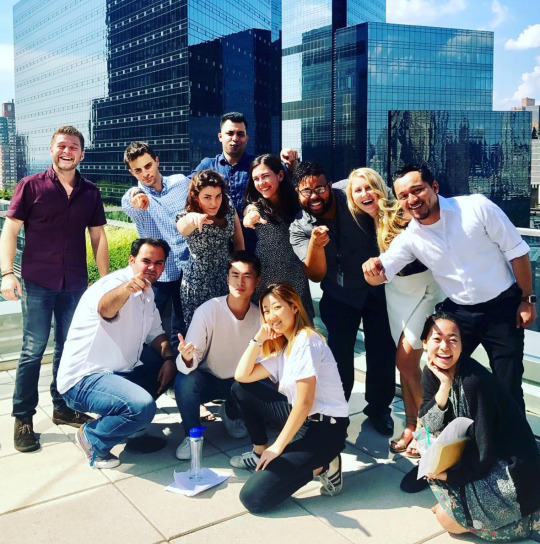
[Rooftop]
The Work:
I was the visual design intern for our group. The other 4 “creatives” included the graphic designer, copywriter, art director, and UX designer. Although I may have been given the role “visual designer,” I worked as if I was all 5 roles combined.
All 13 of us interns worked on one client brief for the whole summer. It was process where we came up with different campaign ideas to solve a central problem that the client would introduce. In the ad world, we present data and research that supports our solution, show the solution in real world scenarios, and explain why this solution is useful for the target audience. Throughout each of these steps, we met with mentors and executives who would critique our ideas and challenge us to think in different directions.
I learned a lot about advertising agencies and how they treat design. I have mixed feelings about this but basically their highest priority is what sells, not necessarily what may be the best design option. 50% of what I presented at the final client presentation was the content itself (concepts, reasonings, data) and the other 50% was how I delivered that message (public speaking). I developed a lot as an individual because this forced me to overcome one of my biggest fears: presenting in front of people. We had to present every other day to many designers and clients, who were spending real money to either buy our idea or ditch it. I learned very quickly how to answer questions under pressure and how to remain calm and composed.
Confidence comes from preparation. The more I practiced and the more I was familiar with our concept, the less concerned I was with my stage fright, and the more excited I was to present our ideas.
There were many late nights in the office where all five of us creative interns were frustrated beyond belief thinking of clever taglines, the purpose behind our design, and other things that just question your sanity as a designer. But it was all worth it because we all felt so accomplished and proud of what we created. While the exact details of what we worked on need to remain confidential, I can proudly say that our client bought our idea and will implement it in the near future!
The People:
Not only is the work you are doing important, but the people you surround yourself with are just as vital. You spend most of your weekdays with the people you work with and you want to be around those who are just as passionate as you are and friendly in the working environment. I really enjoyed working with such a large group of interns because we all got along and we solved a lot of our issues through honest and real communication. I think a healthy work environment consists of a combination of hard work, collaboration, and a few laughs.
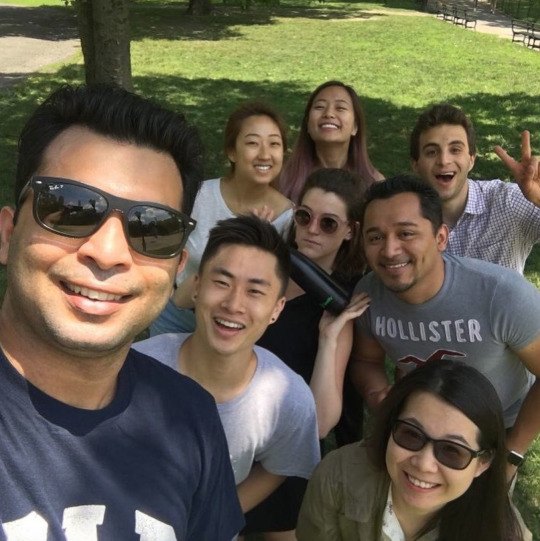
[Central Park Break]
The Conclusion:
Ultimately, this summer was my hardest summer ever. However, it was also definitely my most rewarding and an experience incomparable to anything else. I learned so much about advertising, the professional world, and even about myself as an individual. I know I’ve grown for the better after this summer and it has given me a completely new perspective on the world of design.
The most important thing I am taking from this is a better work ethic. I can honestly say I took school for granted and didn’t work as hard as I could have these past 3 years. My love for design prevailed during this summer and helped me develop a new found appreciation for what I study. After this experience, I am so much more thankful for being in such an amazing design program at CMU and will apply this new profound work ethic into my last year here.
Thank you and I hope you guys enjoyed reading about my experience this summer!
Feel free to message me if you have questions or just want to talk about anything design related, advertising related, personal growth related!!
Email: [email protected]
1 note
·
View note
Text
Susie@NAVER
Hi! I’m Susie, a rising junior in the Communication Design program! This summer, I interned at NAVER Corp, an IT company in South Korea. The internship was 10 weeks long and this was their first time recruiting from overseas.
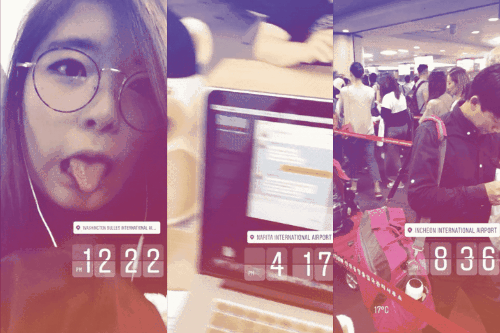
[Me! (in case you were curious who I am) flying from D.C. to Seoul]
I’m not entirely sure how much I can share, so I’ll just talk about the general internship, experience, and what the area is like.
Design Internship
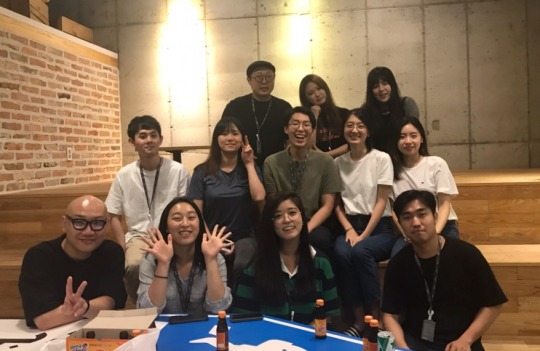
[All the design interns except one (taking the photo)]
Bori (a graduate CMU Design student) and I came a few weeks earlier than the rest of the Korean interns. They were interning to get hired at the end of the internship while we were more of a learning and experience internship.
Bori and I were assigned to one team and one project for the entire 10 weeks while the others intern for 8 weeks with 2 projects. Bori and I were assigned one mentor originally (UX Design), but by the end of week 10, we basically had 6 (4 UX, 2 UI). Everyone involved in the project genuinely wanted to help us out(: It was my first time actually implementing the design thinking that we learn in the classroom and considered UI to that extent.
During the 9th week, the CEO wanted the design interns and the service interns to work on a week long project in groups of 4-5. I do think that this week was one of the more packed, but enjoyable weeks! It was interesting to work with people of a different mindset than designers. The most difficult part for me was probably language. Everything was done in Korean, so a little translating hamster was working nonstop in my brain.
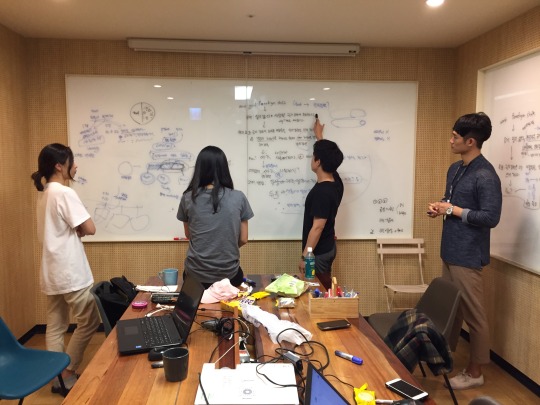
[My week long team: Hyeryeong, Gahee, Kyungil, Kyungjin]
NAVER
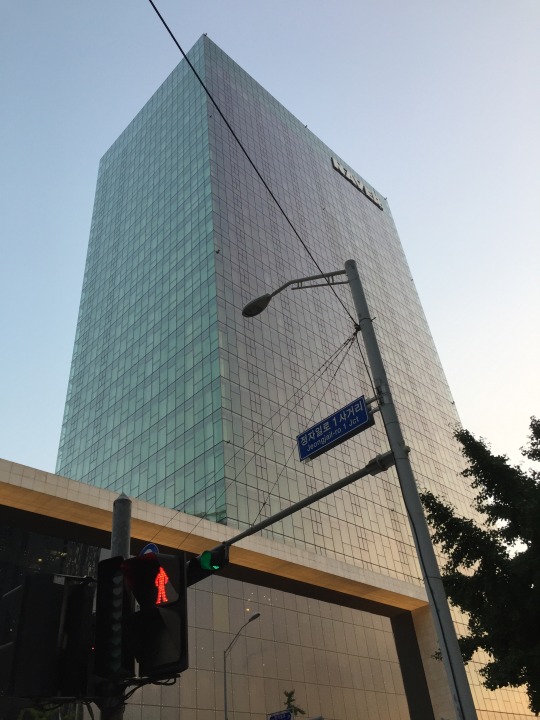
I worked at NAVER’s headquarters: Naver Green Factory. The first two floors are open to public, then the rest of the building is restricted to employees only. Within floors B1, 3-27, there’s 2 cafes, 1 food court, 1 convenience store, 1 work out floor, 1 health center (featuring a room for naps!, massages, a doctor), 1 bank, and more. Honestly, there’s really no need to ever leave the building..... except to see friends and family... I suppose.
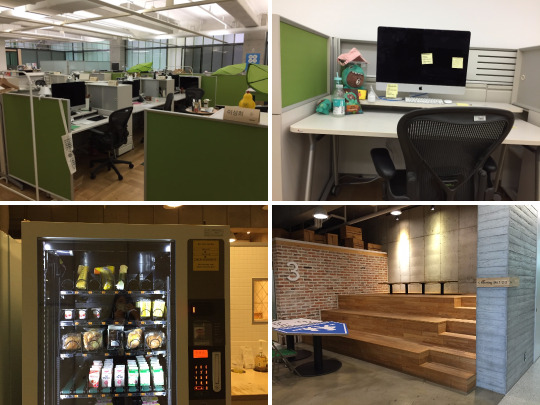
[The floor I worked on, my desk featuring my purchases with the employee discount, breakfast vending machine, open work space]
The office is almost entirely green and there is free breakfast every morning! You can get it from a vending machine conveniently placed on almost every floor! If you’ve ever seen my snap stories from these past 10 weeks... you could see how well designed/ decorated the entire building is.
The work hours are from 10AM to 7PM, but quite flexible both ways.

[The food that’s served at the B1 kitchen is honestly better than a lot of food I’ve had outside the company walls. Each meal was ~$2 too! Around 5pm (I think) the kitchen serves snacks.]
South Korea
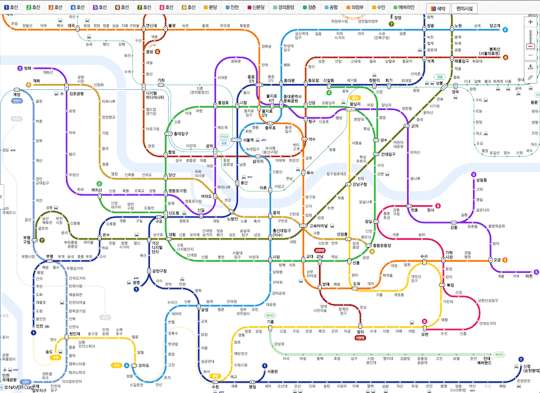
The office is located in Bundang, which is quite close to Seoul. My residence was in Pangyo, a short 20 minutes from Gangnam in Seoul. If I ever made dinner plans, it was almost always at 8pm, Gangnam Station, Exit 11. It was tiring to have post work plans on the weekdays, so every weekend I tried to make the best of my time. I went to Seoul almost every weekend and went to places such as Hongdae, Gangnam, Garusogil, Jamsil, DDP, etc. I even went on a weekend trip to the coast city of Busan with a few friends from school! The city never seems to sleep! Especially in the summertime, there were numerous concerts going on + small vacation opportunities.
Summary
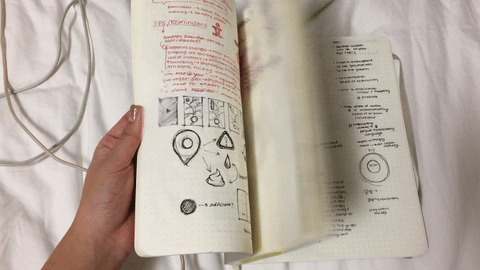
Overall, I thought that interning at NAVER was a really good learning experience. Although I had to adjust and understand a lot of small cultural differences, my experience there was unforgettable thanks to the wonderful mentors and friends that helped guide my way. I learned a lot of classroom to workplace application that would’ve been hard to understand without work experience. I’m glad I was lucky enough to intern at NAVER this summer and I’ll miss all the friendly faces I’ve met on the way.
1 note
·
View note
Text
Cameron@Samsung
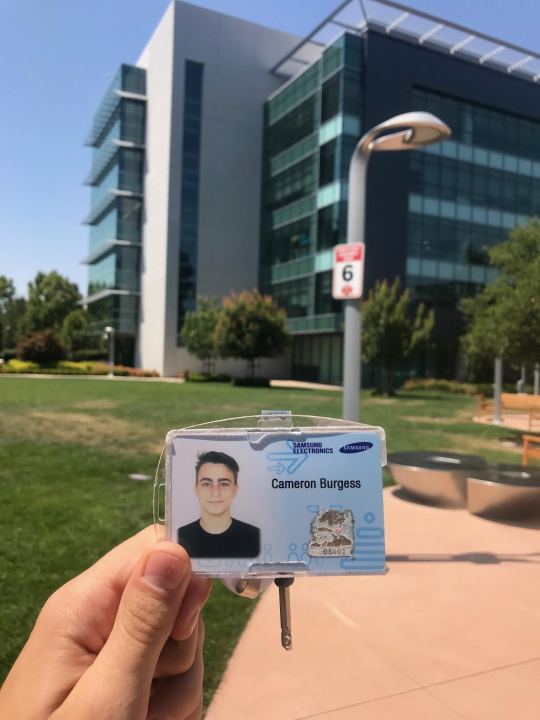
My badge and the building I worked in the background.
Hi all! My name’s Cameron, I’m currently a rising junior in the Environments track. This past summer I worked at Samsung Research America on the Think Tank Team in Mountain View, California. TTT (as it’s known for short) is an atypical R&D team charged with developing concepts and prototypes for future products and technologies; the team is composed of an extremely diverse group of people across design, engineering, and the sciences. Just to name a few, I worked alongside software engineers, mechanical engineers, optical engineers, physicists and solid-state chemistry people, electrical engineers, photographers and filmmakers, and a whole myriad of visual, motion, and interaction designers. I don’t think I’ve ever seen as many different types of work going on in one room as I did at TTT.
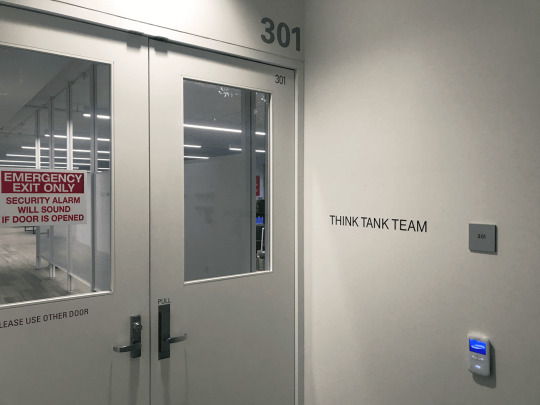
The Think Tank Team is located on the 3rd floor and has ~60 members: inside four semi-distinct labs work together: Tomorrow Lab, Interaction Studio, Pixel Lab, and Computer Vision Lab.
So what did I do, you might ask?
Well, I’m not allowed to say much besides that ‘I worked on new candidate designs and prototypes for future Samsung smartphones.’ Instead of talking about the work I’ll talk a little bit about TTT’s process and what it was like working on an R&D team inside a huge South Korea-based company.
Firstly, TTT delivers many different types of work to HQ: we make concept videos, we invent new sensing technologies, we explore novel interactions and new UX, test industrial design possibilities and create proof-of-concept hardware, create new display technologies, and more. This breadth of abilities means that some projects will have multiple components being developed simultaneously, so one group of people might be building a software prototype while another is building a hardware prototype with experimental tech. Even though the future vision (and concept video) has both of these prototypes integrated into one product at some future date, it can often make sense to incubate these pieces separately for a time.
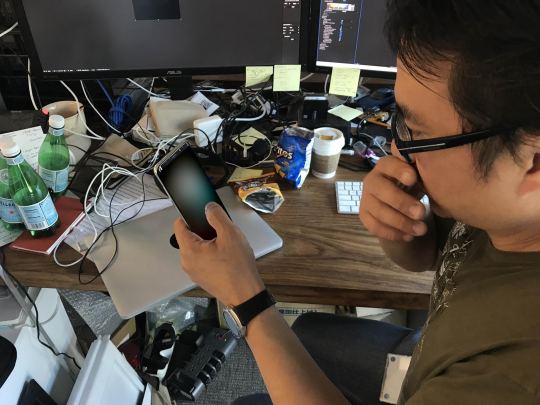
Showing my co-worker a prototype (blurred out for confidentiality).
Before I go into a bit of culture and description of corporate scale — here’s some context, last summer I worked at an internet startup of ~200 people (all of whom worked in one office) called Asana. Working at Samsung, from a scale and culture perspective, was a totallydifferent beast. To start, Samsung Electronics employs over 300,000 people worldwide — just looking at R&D centers, ours was just one of 23 worldwide (the count increases to almost 40 if you count design centers) and this doesn’t even begin to describe the massiveness and multiplicity of teams at HQ. When Pranav, TTT’s Head, would retell the numerous visits he would make on a trip to HQ in our weekly stand-ups, it was hard to keep straight — even the concept of HQ became murky as he described traveling to different cities and campuses. All of this underscores the importance of communication and collaboration required to make TTT’s concepts and prototypes come to fruition.
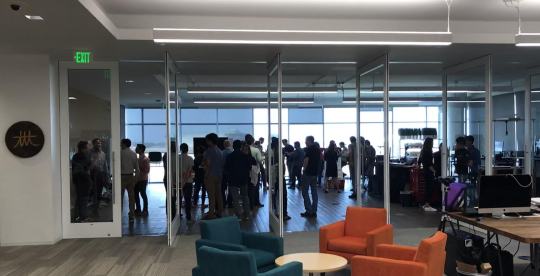
‘The Dojo’ is pictured above: executives, workshops with collaborating teams from HQ, and visitors from Global TTT (our sister lab in South Korea) were hosted here during my time. It also featured a continually replenishing supply of yummy snacks.
My time at Samsung Research’s TTT was a total blast and I’m hugely grateful to everyone at CMU1 who educated and mentored me in preparation for the opportunity. I’d also like to thank everyone I worked with at TTT2 for making my time there exciting, productive, and educative in its own right.
1: In particular to Austin S. Lee, former professor of environments and interaction design
2: Especially Jeffery Pierce, Philipp Schoessler, Jason Yeh, Ranhee Chung, Link Huang, and Cathy Kim
3 notes
·
View notes
Text
(Deborah and Sara-Remi)@IBM
This summer, Deborah and I worked at IBM as Software Design interns.
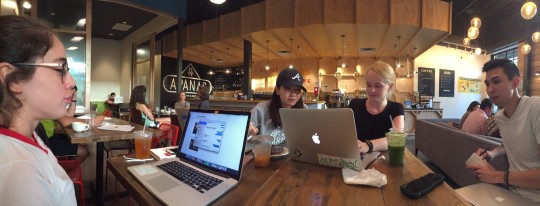
Along with 13 others, we were part of a program called the Maelstrom, which happens 3 times a year. Within the Maelstrom, we both held the title of User Experience (UX) designers, but both dabbled in the roles of visual design and design research.
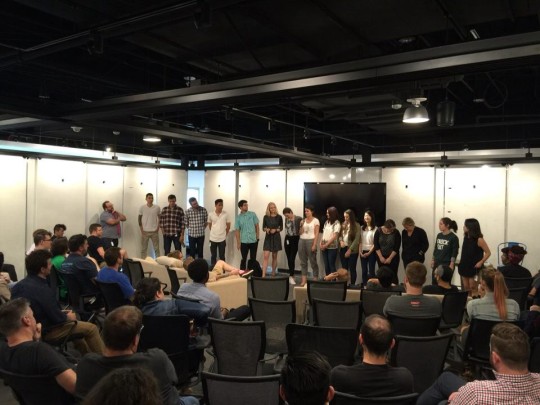
IBM was founded over 100 years ago and has always revolved around invention, innovation, and breaking the status quo. About 3 years ago, IBM decided that design was an integral part of these processes, and converted several of the IBM locations into design studios. Currently, the largest design studio is in Austin, Texas. In the Austin campus, there are around 3 full floors that have been designated specifically for design. The Maelstrom has its own studio on one of these floors, and is in the center of around 10 other product teams, allowing us to see projects being worked on and to overhear critiques and conversations.
We began working in our shorter project — the “Nanoproject” — for two weeks. But moving quickly wasn’t the hard part, not when you’re in a 15 person group. It was pretty chaotic, but working with so many people was intentionally part of the challenge. After we made our final presentation, we were split into three different teams of five. (Sara Remi and I were working on separate teams) Each team was working on a different problem and was given different expectations so it was pretty cool to see what everyone was up to on our weekly presentations. By the end, we are all expected to give our final one to the IBM Design executives, so there’s a lot of pressure!
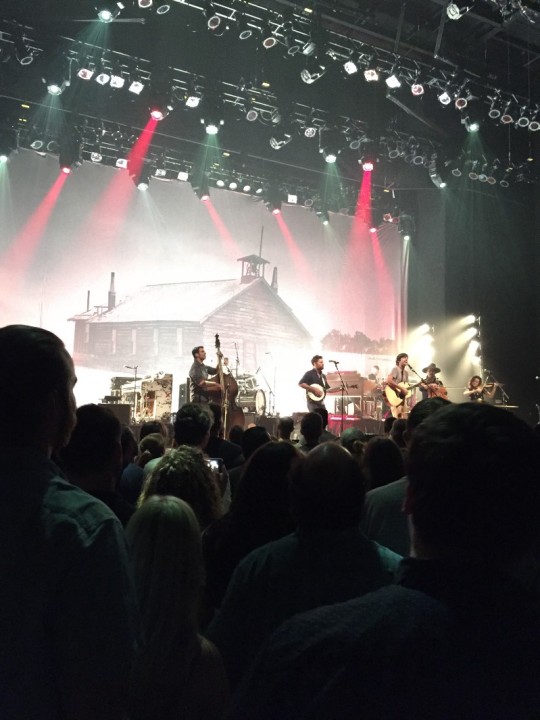
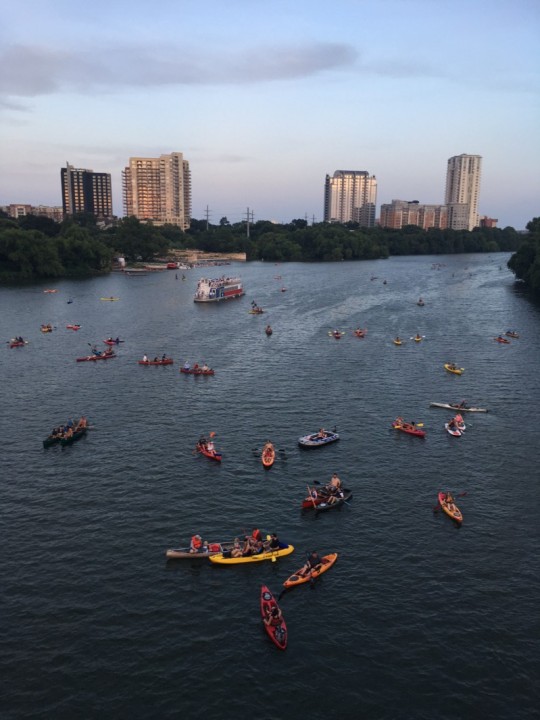
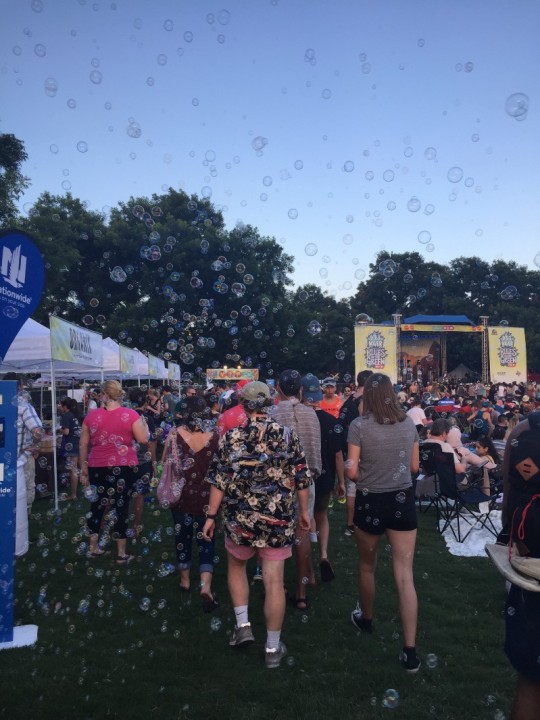
Outside of the office, we have had time to explore both downtown Austin and some of the surround suburbia. Austin is an amalgam of old southern country and hipster delight. The barbeque, tacos, and burgers are unbeatable, and the fun design of houses converted to restaurants gives Austin a unique and comfortable feel. With an average temperature of 100 degrees each day, though, it has been hard to see as much as the outdoors as we would like, and it is super important to keep hydrated.
0 notes
Text
Cameron@Asana
Hey everyone, my name’s Cameron and I’m a rising sophomore studying Environments and Communication design.
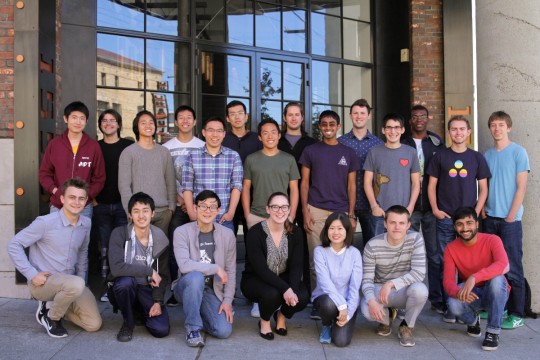
This summer I interned in San Francisco at Asana, a medium sized startup that makes work tracking software for teams. I joined their mobile team in June as a Product Design Intern working on new features for Android and iOS.
Design at Asana
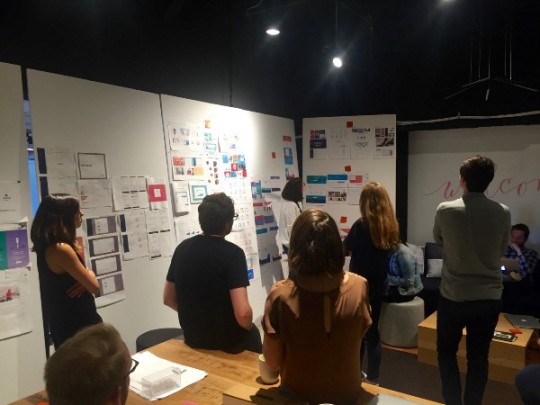
(brand review critique with the complete (comms. + product) design team present)
At Asana, there are about 15 designers across two teams, communication design and product design. The comms design team works primarily on marketing and brand work for Asana. The product design team is distributed across all of Asana’s core product teams (task pane, track anything, mobile, etc.) with normally 1–2 designers per team — the Product Designers all sit with their respective product teams. Designers from both roles often go to each other’s crits (product critique and marketing critique) and we have group design events 1–2 times a week where we share inspiration and talk about design stuff in general.
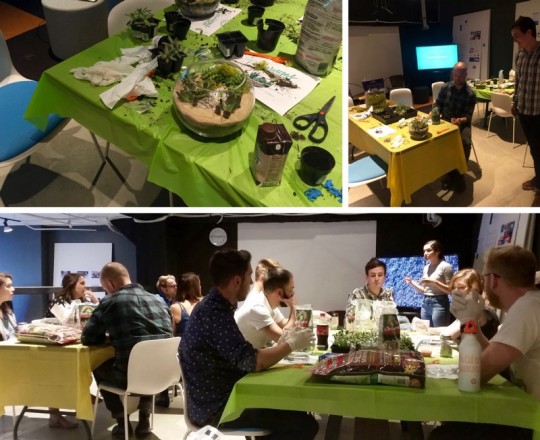
(one group design team activity was a Terrarium building workshop”]
In comparison to my first-year at CMU, one of the biggest surprises was the reduced frequency of critique. Instead of having crit. everyday, I normally had a group product critique once a week. To offset this, Asana also has something called Micro Critique where the designer makes an Asana task with the work attached and a brief description of the type of feedback desired, then they assign sub-tasks to three other Designers, Product Managers, or User Researchers to receive quick on-the-fly feedback.
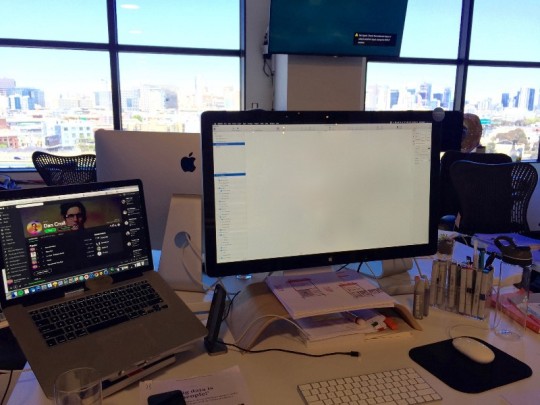
(my workstation (sketch artboards airbrushed out for confidentiality))
Culture at Asana

(the whole company gathered for Asana’s annual summer celebration event)
Asana is a medium sized startup with approximately 220 full time employees and 20 interns for the summer. Asana provides lunch, breakfast, and dinner everyday, so most people get to the office for breakfast around 9:30AM and leave after dinner around 6:45PM. The office culture is vibrant and some people stay after dinner to hang out, chat, and play board games (GO, in particular, is popular).
In terms of culture, Asana places a large emphasis on mindfulness and transparency. That may sound cliché (trust me, it did to me at first too), but after spending a few weeks there, it proved quite true. Everyone within the company has certain AORs (Areas of Responsibility) and the organizational structure is designed such that the people closest to the work are both ‘responsible for’ and ‘enabled to’ make decisions on those AORs.
Furthermore, almost all of Asana’s internal information (including AOR assignments, Key Results for different products, and Company Objectives) is tracked in asana the tool and made transparent and viewable by everyone in the company — this makes it feel like you can see what’s going on within any group in the company at any time.
Living in San Francisco
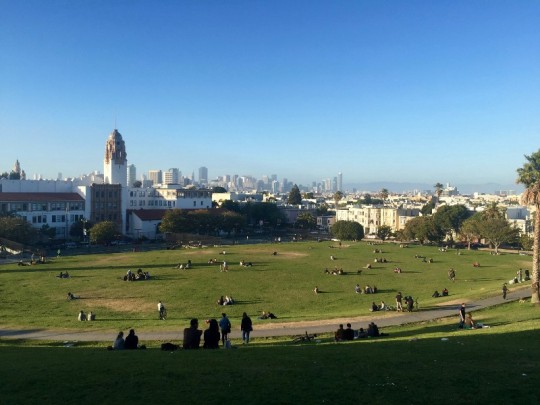
Summarizing what it’s like to live in San Francisco isn’t easy. The way I have frequently explained it to friends and family afar is with a simple idea: “Imagine the most contrast (social, economic, colour, texture, etc.) you could see in one visual frame, that’s SF!” What I mean by that is that you will see google buses rolling down the street next to people selling books on a blanket next to people sleeping in tents next to yuppie interns walking with tech company branded backpacks next to you name it all in one glance. This is difficult to describe, but is easy to understand once experienced. The ‘glances of contrast’ I see walking around San Francisco continue to astonish me, every single day.
Summary
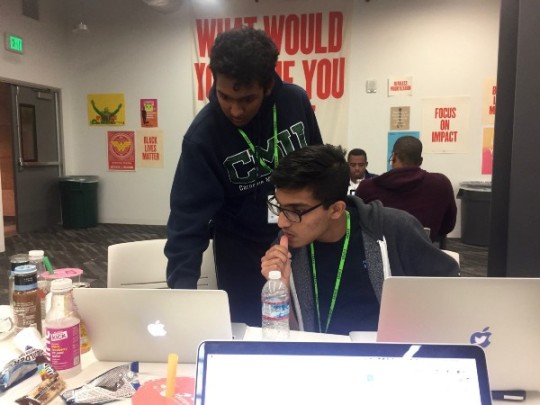
(Rameez Remsudeen (left) and Karthik Raju, my partners at Greylock Hackfest)
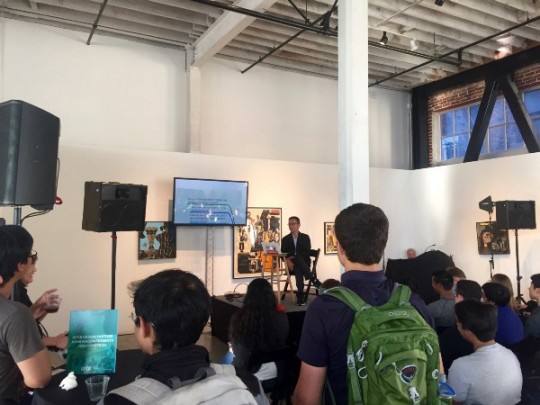
(Madea, KPCB partner and former President of RISD, at a #DesignInTech Event)
I’m throughly grateful for having been able to spend my summer at Asana. I have learned a ton working on the mobile team for the last six weeks — shoutout to Paul, Lili, Chandler and Tyson especially — but I’d be remiss if I didn’t acknowledge all I’ve gained outside of my hours at Asana.
Meeting designers (and others!) at companies throughout the bay who have radically (and also only minorly) different backgrounds and contexts for approaching design and life in general has been extremely rewarding. I’m looking forward to returning to CMU in the Fall — but first, to finish what I started at Asana!
Thanks for Reading! If you have any questions, feel free to contact me.
0 notes
Text
Praew@Fiat Chrysler Automobiles
Hi guys! I’m Praew, and I’m a rising Senior in the Industrial design program!
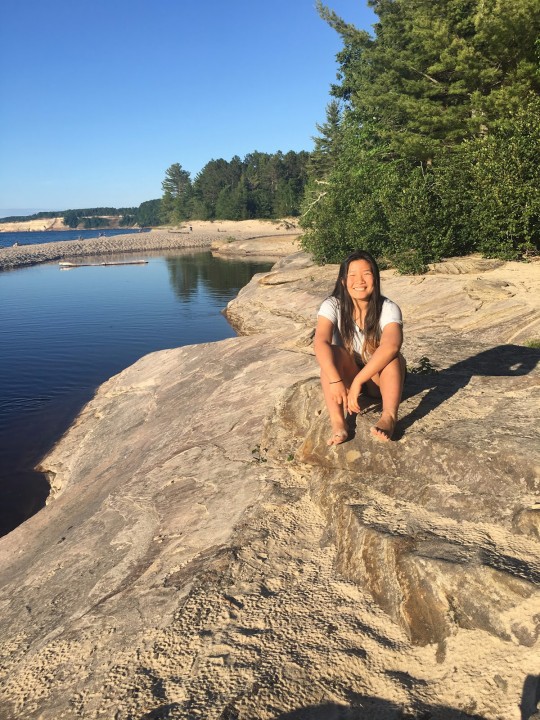
(Incase you guys didn’t know who I was lol. This was taken at the 12 mile beach!)
I am currently interning at FCA (Fiat Chrysler Automobiles), within their User Experience team! When I first received this opportunity, I was extremely worried that I was going to be stranded and bored in the middle of nowhere, Michigan (since I didn’t know how to drive) — but it actually has been one of the best summers ever!
A lot of you may not be interested in the automotive field at all, and trust me, I was the same, but ever since being here I have realized how much potential there is for User Experience design within this field. Everyone is looking forward to the ‘connected lifestyle’ that we are going to have in the future, and to have that kind of connectivity, the car is going to have to be at the center of that experience.
(Check out this cool video by Nissan if you have no idea what I’m talking about! https://www.youtube.com/watch?v=h-TLo86K7Ck )
Due to all this future hype and technology trends, I have attended many cool brainstorming sessions for concept cars. FCA also works in very lean teams, so they listen to everyone’s opinions, and even as an intern, your voice could easily make an impact in ideas that go forward to the final stages!
To me, the best part of this internship was that they really respected my thoughts, and let me shape my own project so that I could work on and learn about things that I enjoy doing. I had many small side projects that exposed me to new areas of design, but I was also able to focus on something that I am interested in as my main one. Even the UI work was interesting to me, since it was in a car dashboard cluster/radio format, rather than the usual phone or web interfaces.
Apart from the work part of this internship, they also had really good programs for interns to join, like factory tours, test lab tours (HMI lab, wind tunnel etc), test ride and drives and social events with other interns in the area (Ford, GM). They also placed most of the interns in the same housing complex (in Clarkston), so it was great to be able to hang out with the other interns after work and on weekends.

(View of Detroit from one of the apartment tours the After5 intern program took us on!)
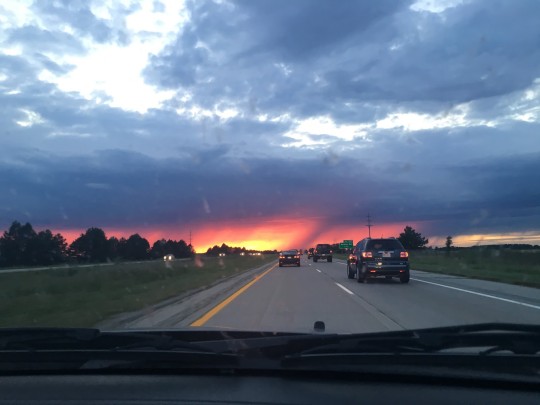
(Sunsets in Michigan — I would see this really often, just on my way home from work!)
Another part that made this summer amazing was the beautiful nature around Michigan, and the awesome people that I became really good friends with who would go on these weekly adventures with me. Michigan has the most beautiful lakes, skies and sunsets — totally worth the 3~5 hour drives out to each location! I would really recommend visiting Mackinaw Island and the Sleeping Bear Dunes/Traverse City if any of you ever visit Michigan!
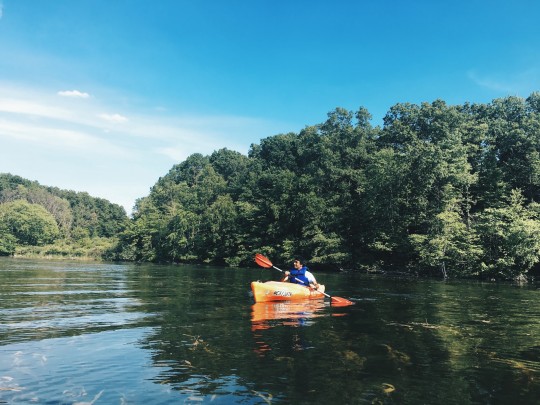
(Kayaking at Stony Creek Metro Park! People love watersports here in Michigan: apart from kayaking, they also had paddleboarding, canoeing, jetskiing, fishing, yachting…etc.!)
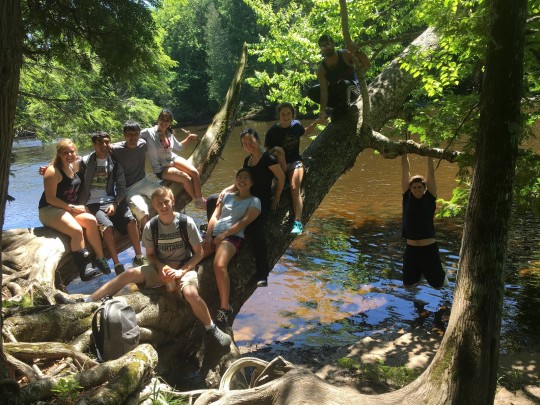
(Hiking with my intern friends at the Tahquamenon River Trail!)
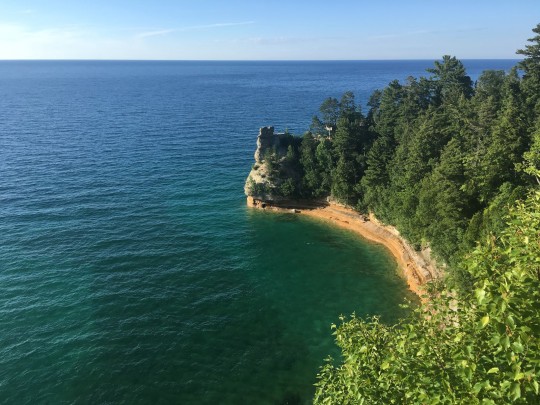
(Pictured Lakes National Lakeshore)
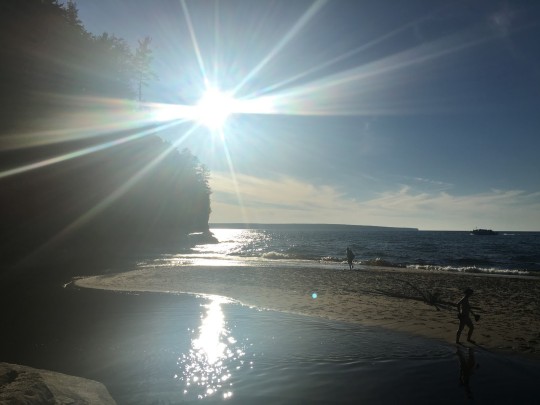
(Twelve mile beach)
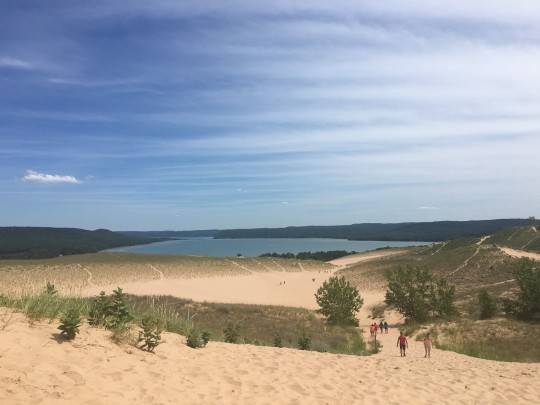
(Sleeping Bear Dunes….the most difficult hike of my life!!!)
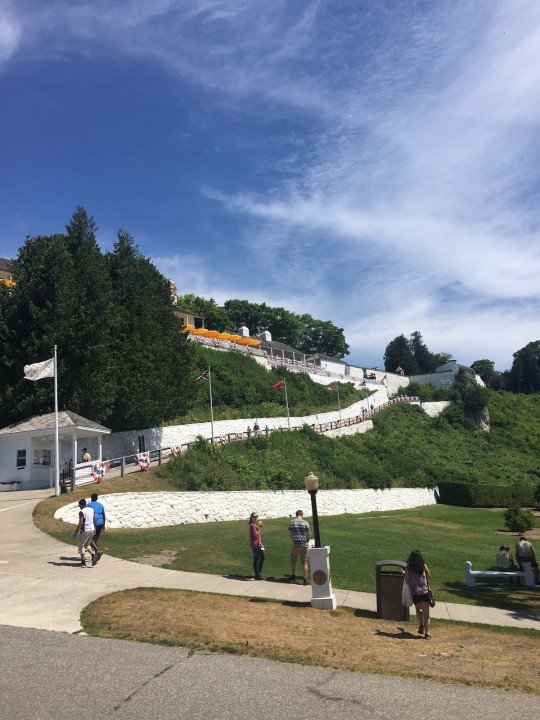
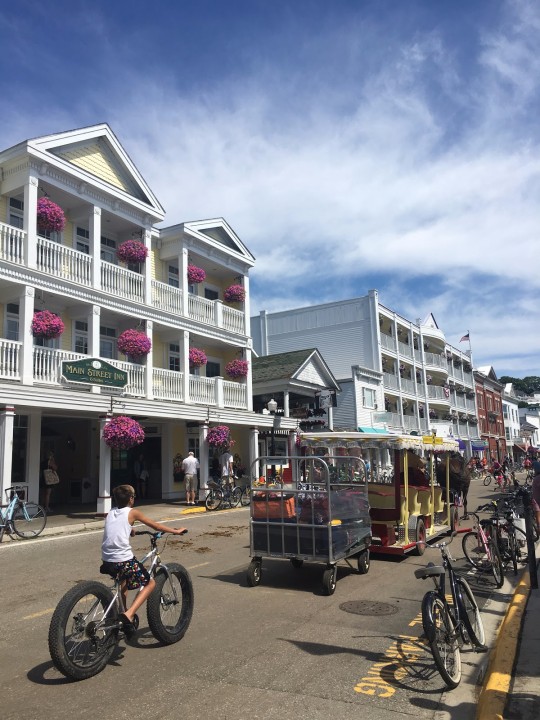
(Mackinaw Island!)
Detroit and Ann Arbor are also great (nearby) cities to visit, despite what people say about Detroit, I loved going down there even though it was a 40 minute drive from the FCA office. Ann Arbor is a quirky college town with a lot of great eateries, cafes and vintage stores, so I think that being in Michigan really allowed me to explore a very diverse range of lifestyles and experiences!

(Greektown in Downtown Detroit featuring my intern friends Joy and Saniya, and ID Seniors Diana, Eileen and Albert!)

(Lack of good food is definitely not a concern in Michigan….courtesy of Diana’s snapchat hehe)
If you have any questions about interning at FCA/in Michigan/with an automotive company please don’t hesitate to come up to me and ask! It has been a really great experience for me, so I would be down to chat about it more in detail anytime!
0 notes
Text
Jess @ Apple
Hi everyone! I'm Jessica, an Industrial Design/CS Senior in the BXA program. I spent my summer interning at Apple. It was my first time being in the bay area for a while, so I decided to stay in San Francisco and explore a bit. It was a long commute to work but definitely worth it!
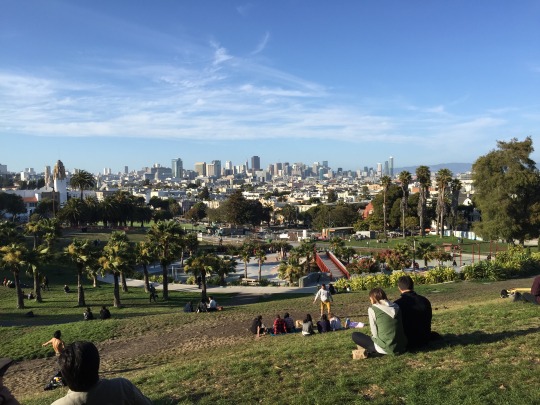
Dolores Park
Apple itself is located throughout the Bay area with a main campus in Cupertino as well as a couple in Sunnyvale and San Francisco. My team was located in the Sunnyvale office (in the building next to Irene@Linkedin), but I was lucky enough to work in the San Francisco office once a week. Because there are so many teams at Apple that operate in different ways based on the product, every intern has a different experience. Interns have a few events together such as a lecture series where we got to hear from several higher-ups like Tim Cook and Eddy Cue, Intern Games aka Apple's version of the hunger games, the App Marketing Challenge, and iContest, an intern hackathon. However, the intern experience is highly based on what team you're on, as they really treat you like an employee.
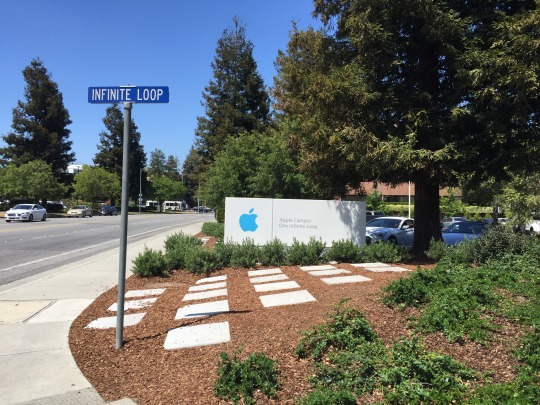
obligatory main campus shot
I was on the iCloud Human Interface team, but more specifically the Maps HI team, which designs features in the Maps Application. I started interning at a really interesting time: the team was moving from smaller office in Cupertino to Sunnyvale, and it was just a few weeks before WWDC15. With WWDC came the announcement of Maps transit, a better Maps browsing interface, Swift 2, Apple Music and other features in iOS 9.0.
Aside from the new iOS 9 features, there were a lot of other aspects of Maps that I had to think about as part of the team. As an Apple application, it needs to exist well on multiple devices from iMacs to iPhones to Apple watches, and it has to integrate well into the different systems and relate to other applications. Within the app, there are so many factors including navigation, cartography, modes of transportation, and localization in maps around the world. With all these bits and pieces there was definitely a lot to work with. I loved being a part of the team because I felt I was exploring and traveling while working on projects. The team has to think about how the product works all over the world, so I learned a lot about landmarks, businesses, and transportation systems in several cities. It came in pretty handy when navigating around SF -- I feel like I have a map of it burned into the back of my head.
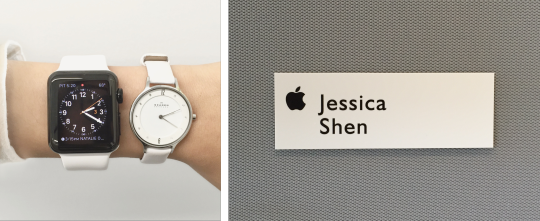
I got to play with the apple watch! and my nametag made me feel pretty official :)
The team itself was an awesome group of people to work with, and I had a great time getting to know everyone. The office is set up similar to a studio space and we always had some kind of music playing and doodles on the whiteboards. It was fun to sometimes have drinks in the studio after work, play Mario Kart on the TV, or shoot the occasional nerf gun :).
As an intern, I got to work on a personal intern project that culminated in a presentation to other teams at Apple. While I did other projects for the team on the side, the intern project was the main focus of the internship. Apple gives you a lot of freedom with the project (as long as it relates to your team somehow), and its really up to you where you want to take it and how far you want to take it. You're really encouraged to reach out to anyone within the different teams at Apple to inform your project. Apple consists of so many people in different facets of their products from visual design, UX, prototyping, engineering, analytics, etc., so if I had any questions or just wanted feedback, it was always easy to find the right people. What I loved about working at Apple was that everyone was always happy to help out or chat about something over coffee, and it was great to learn about what other people do at the company.
There was another intern on the team that was working on a different intern project, and we worked together along with our managers extensively. We presented our progress every week to the entire team and it was extremely valuable to hear feedback from so many professionals that had worked with the product. Hearing everyone's different perspectives on our projects really got us constantly iterating on designs and thinking about every little detail. A huge part of the internship was spent iterating and refining the project gradually from wireframes to screenshots, but I also ended up picking up Swift and creating prototypes in Xcode. With so much time and freedom for the project as well as so many helpful people around you, its a great opportunity to learn different design tools and processes.

pride parade in SF!
Aside from work, I had a lot of fun exploring SF! I met up with a lot of other CMU students and old friends in the city, went to the Pride Festival, saw artists at Outsidelands, and probably ate too many burritos that were the size of my head. There's always something going on in the city from food truck gatherings, Street festivals, social dancing, concerts, museum events (I could go on and on), so its impossible to get bored. It gets pretty cold, the hills are steep, and sometimes you pay $8 for "fancy" toast, but its a pretty amazing place to be.
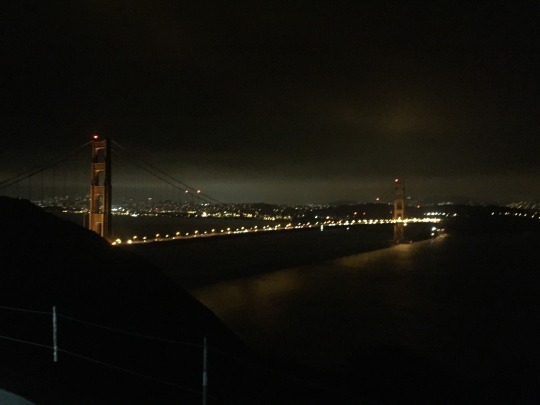
#shotoniphone6
I'm sad that summer’s ended so quickly, but I’m so glad to see everyone! Thanks for reading and hit me up if you have any questions about Apple/SF/craigslist scams/weird ice cream flavors I tried.
-Jessica
3 notes
·
View notes
Text
Tiffany @ Play
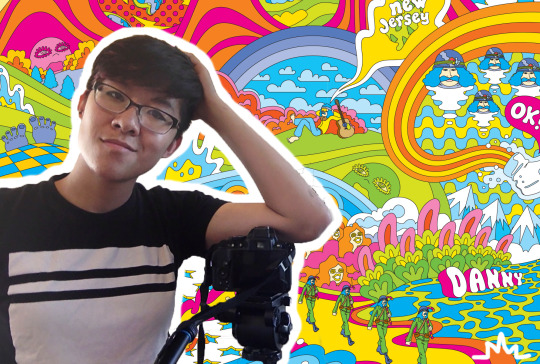
Hello! I’m Tiffany, a rising sophomore studying both Product/Communication Design and Human-Computer Interaction!
Here’s my summer at a glance:
Took home grand prize at the first ever HackGCT (Grand Central Tech) for the platform, Shoe-In. The highlight was presenting our idea in front of 300 tech professionals and students at the Goldman Sachs HQ!
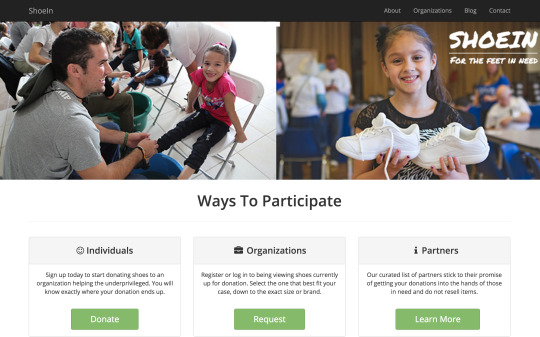
Spent three months interning at Charlotte’s Book which was an incredible experience, as I got to work with my first #girlboss. She’s a role model in choosing to leave her high paying financial corporate job to run her own startup. I helped produce in-house photography, design social media content and create marketing materials for distribution.
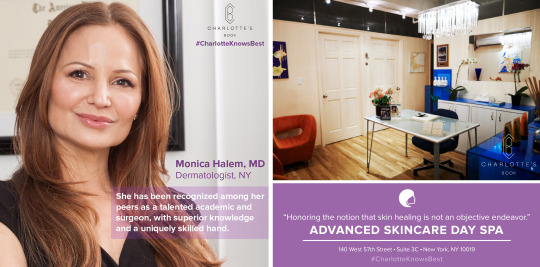
Interned at American Artists Representatives also doing graphic design and digital media marketing work (creating email templates for newsletter blasts, etc). I got a feel for how creative content production companies are run by working closely with the managing director.
Volunteered for Governor’s Ball music festival for the second year in a row! I worked 5 hours a day helping to clean up the grounds and direct concert-goers. In return, I got to attend all three days for free! I also checked out Mad Decent Block Party and went to some of the free Central Park Summerstage Shows (like Sylvan Esso!)
Started a sneaker blog to practice writing about sneakers and the materials they are made of but also I just wanted a separate place I could keep track of and drool at new sneakers.
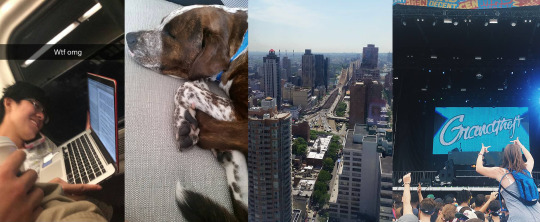
Now I’m going to jump into the details of what I spent the first half of my summer doing aside from all the above. I helped develop an iOS app while attending a program at Cooper Union in partnership with IBM Watson. If you make it to the end, I talk a bit about touring the NY offices of Google, Facebook, Bloomberg, Spotify, Venmo and a few others that were on my “must visit” list!
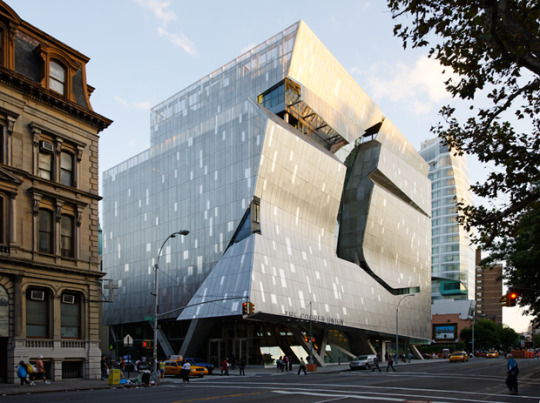
MAY - JULY I spent six weeks at The Cooper Union studying “Engineering for Entrepreneurship”, which was offered in partnership with IBM Watson. I was surprised to find out only eight students signed up for the program. Regardless, there were a strong mix of students from universities across the country studying computer science, digital media/design, international relations and business. Some were rising sophomores, while others were to be seniors and saw the class as a great opportunity to network while in New York area.
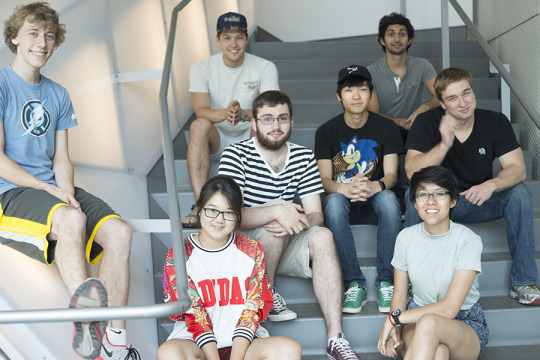
Throughout the course, we learned about business model canvases, entrepreneurship, human-computer interaction, user experience design, and iOS mobile application development. Our textbook was really well-designed and made to people of our age and those in their twenties. I’d highly recommend this book if you want to pursue an entrepreneurial career path. Here’s a preview PDF version with 60+ pages to check out!
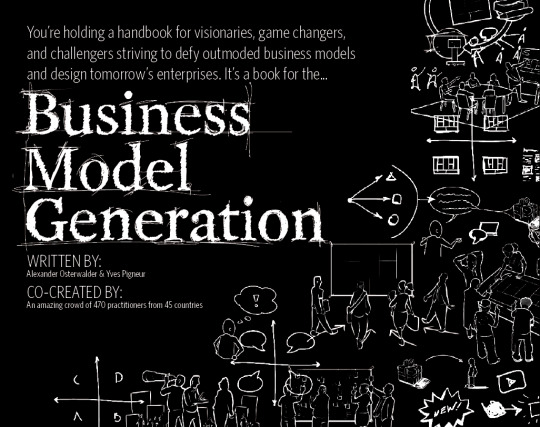
The coolest thing about the course was getting to work with IBM Watson technology. Most people think of Watson and say, “Oh yeah! That’s the genius computer that beat humans at Jeopardy!”
If you’re like me, you probably didn’t pay too much attention to what happened to Watson after that historic event in 2011. So upon hearing we’d get a “Watson” for the class, I thought maybe it was a robot by now…a computer on wheels that people could have in their future homes or offices? I truly thought Watson would be something physical I could interact with, like what you see below.
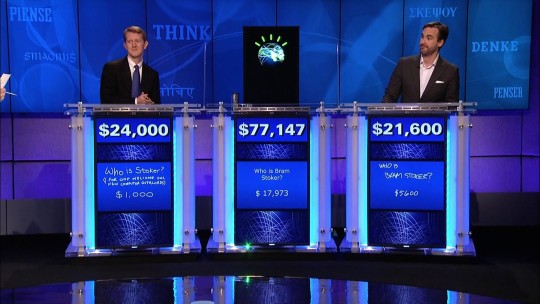
Well, our mentor made it very clear to us that IBM Watson is now a brand, not necessarily a “thing”.
From my understanding, Watson is an exceptional tool for students, entrepreneurs, businesses and organizations to utilize in making smarter decisions, visualizing data and most importantly, finding solutions to problems both small or large scale. The website explains how Watson works. It’s been “built to mirror the same learning process that we have—through the power of cognition. What drives this process is a common cognitive framework that humans use to inform their decisions: Observe, Interpret, Evaluate, and Decide.”
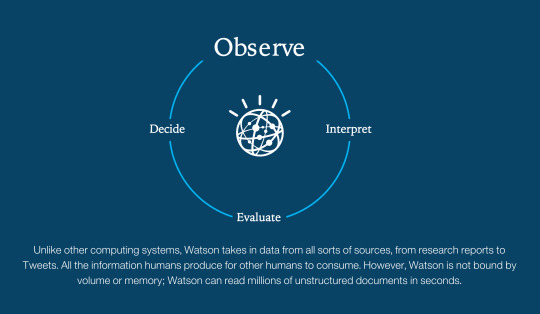
We were approached by the New York Public Library Labs team to create an app that would “add value to Project Gutenberg”.
For those who don’t know, “Project Gutenberg is a volunteer effort to digitizeand archive cultural works, to ‘encourage the creation and distribution ofeBooks’.[3] It was founded in 1971 by Michael S. Hart and is the oldest digital library.[4] Most of the items in its collection are the full texts of public domainbooks. The project tries to make these as free as possible, in long-lasting, open formats that can be used on almost any computer. As of April 2015, Project Gutenberg has over 49,500[2] items in its collection.” They’re the books that look like this:
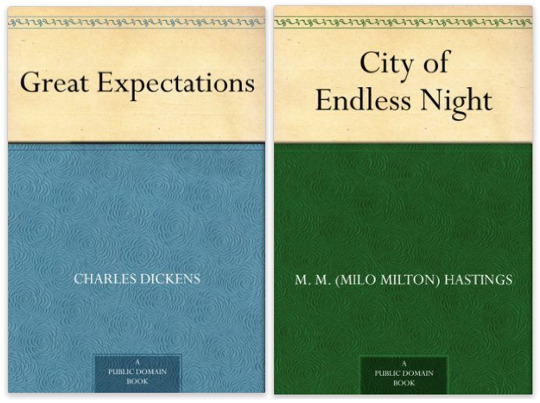
We did more research into PG and began to understand why NYPL Labs wanted help.
So many people, even those with eReaders, just don’t know about PG.
The majority of books in the catalog have no information on them. They have never been reviewed or tagged. The books are just that old!
The design of the website is not user-friendly. Can you imagine browsing fo a book with this kind of a UI?
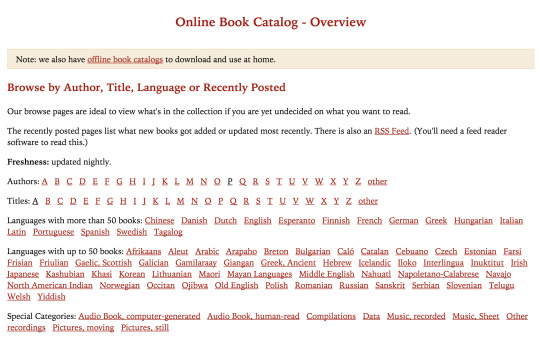
We spent a chunk of time trying to figure out our exact problem statement. Then, we got data on our target audience, the market, competitors out there, APIs and more. We honed in on putting the HCI methods we learned to use.
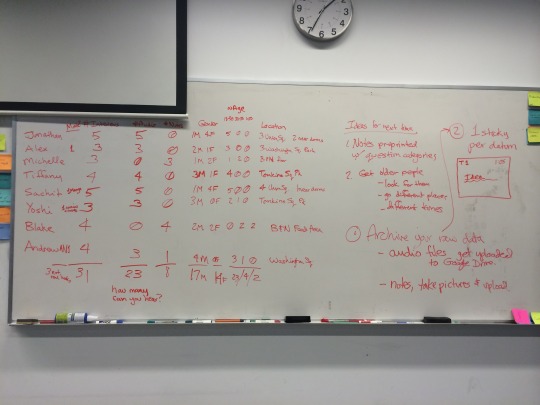
Post-its were everywhere, always.
We conducted interviews in bookstores, the parks and on the streets around Cooper Union. We’d regroup to create affinity diagrams in hopes of better understanding the information collected.
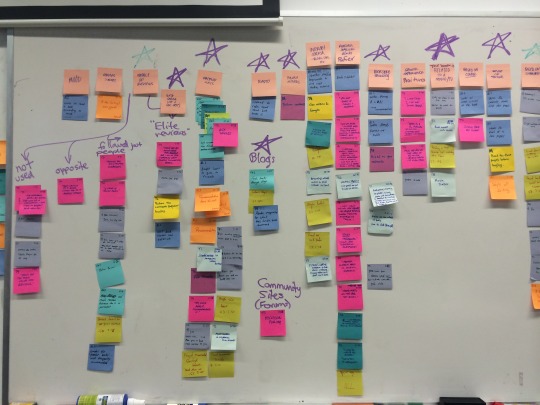
Coming to a conclusion, we settled on producing an iOS application backed by IBM Watson technology known as, Shelf. The app allows you to ask for book recommendations as you would with any other person!
Shelf interprets a user’s request for a book recommendation through natural language processing and returns relevant Project Gutenberg books matching the query, listed in order of confidence level.
vimeo
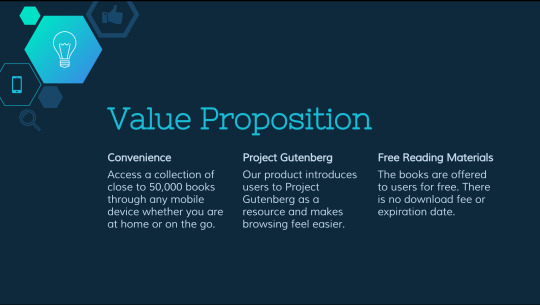
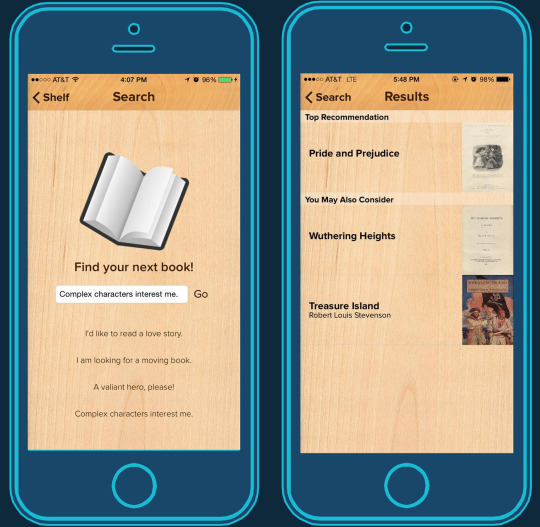
We all had doubts that we could build a fully functional app in the span of two weeks. Even our professor was worried for us.
In the end, the pressure only helped us work more efficiently to reach our end goal. The developers and designers familiarized ourselves with XCode, Swift and prototyping software and got down to business, tackling issues as they came along. Working together, we set up a MongoDB server to store information, built a corpus of PG books, trained Watson through its Q&A engagement service, practiced our presentation pitch, and filmed a product video. NYPL Labs and IBM Watson’s representative loved the final product and commended us on both the simple design and user experience of the app, seeing great potential in it. I think that what we created has helped them to think about their approach in finding ways to make Project Gutenberg more accessible moving forward, in a different light.
The course was as much about marketing and technology as it was about taking advantage of the many opportunities New York City has to offer professionally and culturally!
As a class, we visited the IBM Watson Experience Center, Google (Nike is in the same building!), Microsoft, GameChanger, and Bloomberg. Bloomberg is always a fun place to tour around because the office space is stunning and people are always bustling around going from meeting to meeting. They offer an endless amount of snacks and meals for workers, an incredible view and there are fish tanks on every floor, including a small Koi pond. The thing I loved most about Google’s office space though is that fact that there are racks of Razor Scooters free for employees to use to get around more easily. On my own, I visited Spotify and Venmo which both provide awesome work environments. Last but not least, I got to grab lunch with Gene Hua (Senior CD) and Josh Eiten (Senior ID) at Facebook which was such a treat!
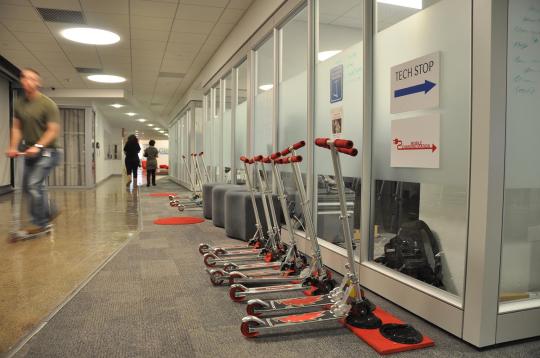
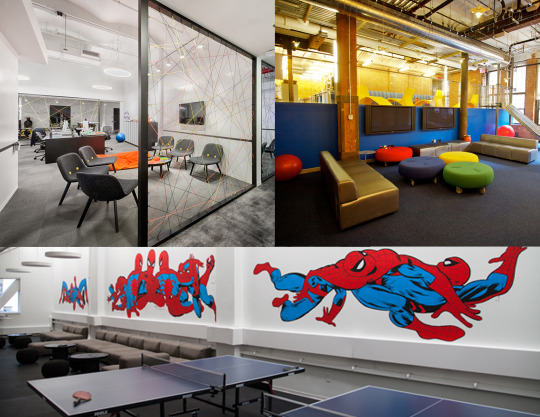
Pictured above: (Top left) Spotify uses strings instead of walls around the offices where possible so that there’s 100% transparency! (Top right) Google’s office is great and has a really playful atmosphere to it loaded with video games, pool tables, etc. If I remember correctly there’s even a shower available for after you exercise on the treadmills? (Bottom) Spotify has a pretty open space too for gaming and relaxing!
Since the middle of August, I’ve been resting at home taking a well deserved break. But I’m very eager to get back on campus to start putting all the new skills I learned to test. :-) Goodbye summer 2015, it’s been too real.
2 notes
·
View notes
Text
Irene @ LinkedIn
Hi everyone, I’m Irene, a rising CD senior. This summer I was in the bay area, working as a User Experience Design Intern at LinkedIn. I was already familiar with the area so I haven’t explored much over the summer, but I have to say… nowhere else can beat the perfect weather in California.
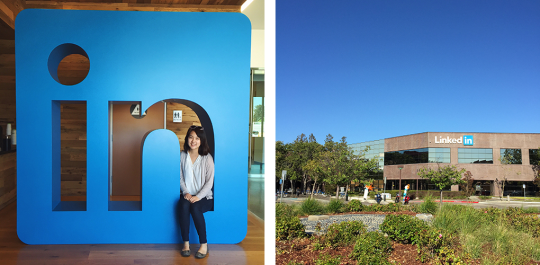
As many of you may already know, LinkedIn is a professional networking site that many people around the world use to be successful and connected with other professionals. Throughout the summer I was proud to work for a company that has a dream to create economic opportunity for everyone.
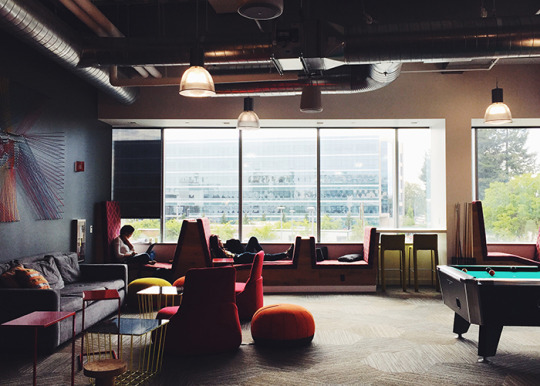
Lounge Area in Sunnyvale Office
What I love about LinkedIn is the culture; people are passionate about the work they do, and they know how to have fun. LinkedIn is also very diverse; there are so many people with different backgrounds and fresh perspectives, and every single employee is unique and extremely talented. It was such an honor to work closely with some very talented people in the company.
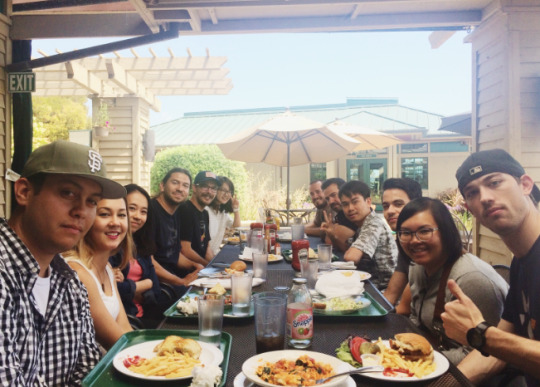
There were four design interns including me over the summer, but every design intern worked with completely different teams. I was the only intern in my team, which was the Design Systems team.
To explain what Design Systems does, they focus on two big areas. The first one is brand identity, so some designers in the team design logos, color palette, typography, etc. to create patterns for all designers to use in their LinkedIn products. The second area they focus on is a much broader view of the company, like working with groups (sales, engineering, HR, etc.) that have communications needs using LinkedIn’s brand/voice. For example, some designers in the team (like my mentor) make presentation designs for executives and communications campaigns. Generally, this side of the team makes things that talk about LinkedIn as a company. What’s unique about this team as a whole is that they are known as the most horizontal team, and they work with almost everybody else in the company.
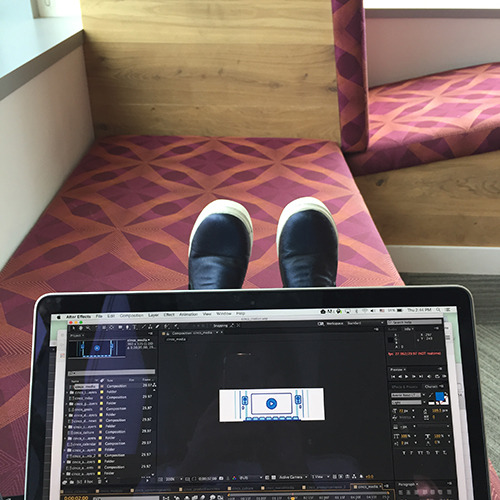
So over the summer I���ve been working on several different projects with this team. My job title may be UX Design Intern, but surprisingly I’ve been doing mostly visual design stuff. I often worked on motion designs, graphic illustrations, and a little bit of branding. During the first half of the internship, I independently worked on a project that my mentor assigned, and during the second half, I contributed to a bunch of different projects that some designers in the team were working on. It was so much fun working with them side-by-side, because I learned a lot from their skills and knowledge, and they genuinely appreciated my contribution and used what I created for them. They made me feel like an important part of the team.
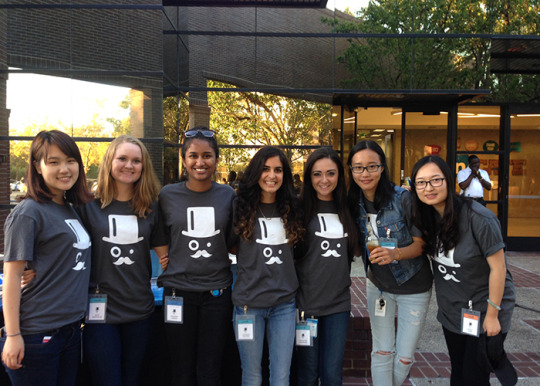
Besides the main projects I worked on with Design Systems, I also collaborated with 14 other interns in the UED (User Experience Design) department to create an external UED recruiting website. I’ve never worked with such a large group of people before (and I’m sure it was the same for others as well) so it was a struggle making decisions and moving forward in the first few weeks. We were a group of design interns, web development interns, and a research intern, so we worked through the process of researching, creating content, designing, and executing the website. There’s been a lot of disagreements, miscommunication, and unproductiveness, but after seeing the successful result, I think it was absolutely worth it, and I definitely learned a lot from this project.
One of the important mottos that people at LinkedIn often bring up is that relationships matter. Because of that, the UED interns had the opportunity to have lunches with the leadership team to build connections and get to know them in a casual setting. Besides the group lunches, each one of us got to have one-on-one meetings with selective leaders to ask questions and learn about what they do. The coolest opportunity though, was to “shadow” Steve Johnson, VP of User Experience Design, for the entire day to physically experience what his typical day is like. Thanks to him, I got to attend meetings with different design teams, learn about some products they were working on, and also, meet and shake hands with LinkedIn’s CEO, Jeff Weiner.
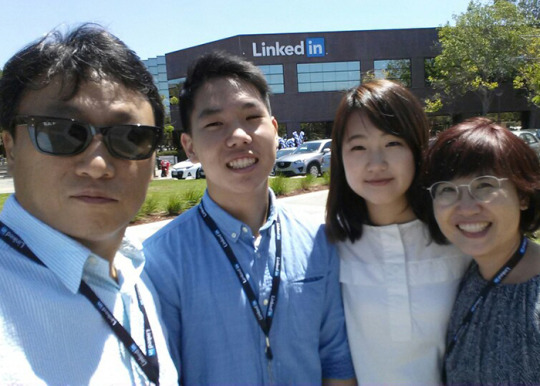
Of course, internship at LinkedIn is not just about work and meetings. We also had a lot of fun while we were interning, and got to attend some cool events that LinkedIn hosted for us. We had a graffiti event, formal party, design open house, paint balling, speaker series, and many more. My personal favorite was the Intern Day, when we invited our family members to the campus and show them what our work environment is like, and what projects we’ve been working on. My parents drove to Mountain View from LA to see me, and they were super happy and proud to see where I work, and what I’ve been doing.
One last important thing to mention about this place is that they feed us a bit too well. The food is always free; free breakfast, lunch, and dinner. The cafeteria has a variety of cuisines, so it was always a struggle to not put too much food on my plate. I honestly might have gained about 10 pounds (cry)
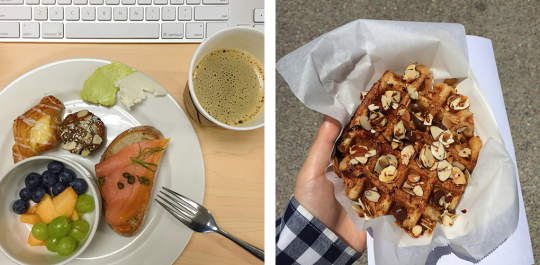
But overall it’s been an amazing summer! Excited to see you guys so soon. Thanks for reading!
0 notes
Text
Emily @ Trusst
Hi everyone! I’m Emily, a rising ED/CD sophomore. This summer, I had the opportunity to spend time at home while working and go on a few small adventures with some of my friends. I live just a little bit north of Pittsburgh so I commuted to East Liberty every day to intern with Trusst Lingerie.
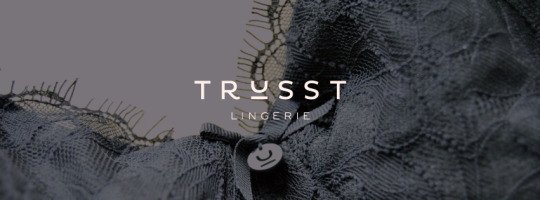
Trusst Lingerie was founded when Sophia Berman (CEO) and Laura West (CPO) joined the latest cycle of Alpha Lab Gear (a startup incubator). They brought me on as a design intern in May as one of their first hires for the summer. Their cycle of Alpha Lab Gear, which lasts nine months, presented their final pitch at demo day in June. They are still working out of the Alpha Lab Gear offices for the next year as Alumni-in-Residence, and have expanded their company to nine people.
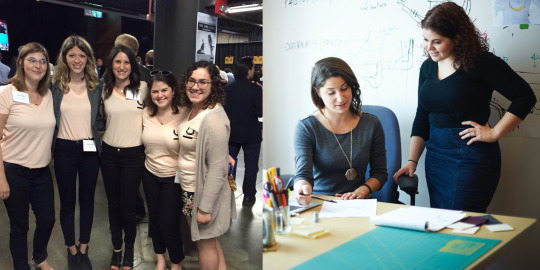
This is the team on Demo Day. �� Sophia and Laura discussing future plans.
Sophia and Laura both graduated from CMU with Industrial Design degrees. Trusst, named for the “truss” bridge system that inspired their product, is reinventing the idea of the bra. They have combined patent-pending technology, luxurious fabrics, beautiful patterns, and the highest quality craftsmanship to change the way you think about lingerie. Basically, they’re starting a “bra-volution.”
When I started working for Trusst, I wasn’t really sure what to expect. But I loved (almost) every minute it. Laura sent me to a laundromat for a day to heat test some materials in a dryer. After sitting there for over 5 hours, the manager had come over to me to make sure I wasn’t insane, I got yelled at by a customer for scaring people off and finally, some asked why I was pointing an infrared thermometer gun at my laundry. After that, I wasn’t asked to go back to the laundromat again.
Trusst is just starting to take off as a company so they were able to give me the opportunity to try all types of design this summer:
Products- Laura is Chief Products Officer (CPO) so she spends most of her time working on prototyping, creating patterns, sewing sample bras, and coordinating the sourcing of our materials. Earlier in the summer, I got the chance to help Laura build some of the components of the bras, as well as cut the patterns for her when she is making them.
Laura and Sophia brought on a VP of Technology, Susan. Her role is to understand all the scientific information behind the materials. I’ve gotten to help her with heat testing the materials and inputting data based on materials research.
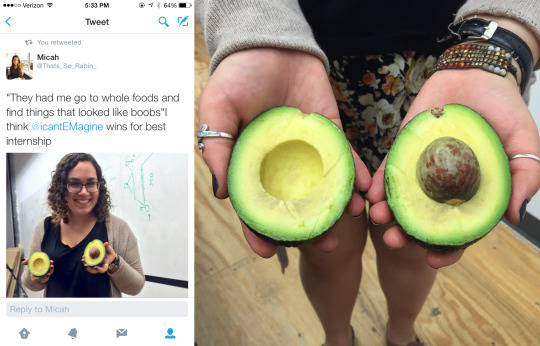
We did a photoshoot with the products and fruit to represent how you can compare sizes
Communications- Trusst is planning to begin selling their product via e-commerce (pre-orders launch October 1). To successfully market their product, the summer has been spent coming up with ways to connect with followers through social media and email outreach.
Additionally, Trusst launched a Kickstarter campaign in May that raised triple their Kickstarter goal. They sold over 600 products and gathered over a thousand new, interested followers. Most of the communication work I have been doing has focused on social media and keeping all of these people engaged.
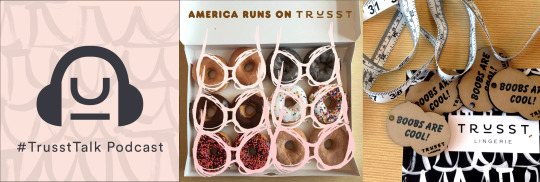
A few examples of social media and customer outreach projects
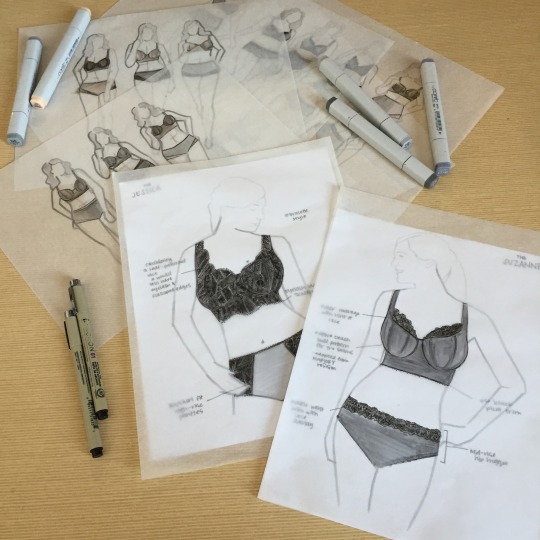
Fashion sketching to further investigate the different elements of each bra and how the styles look together
Environments- When I started working for Trusst, I explained to them the new concentrations and how the program for design at CMU was structured. Since they are both graduates, they understand the methods and processes behind design as taught by CMU professors. I worked with Sophia to create projects that focused on building spaces and interactions between the company and people. By creating databases and providing input, I was able to establish organizational systems for the company as a way to save time.
This month, Trusst moved from their original office to an Alumni-in-Residence space. Sophia had me sketch out and create the new space for the sewing studio for Laura. I researched shelving and storage to effectively use the space they were given and created a rough layout using rectilinear shapes.
Since I had the opportunity to stay in Pittsburgh this summer, I was able to continue an internship that I’ve had since the fall. I work as an assistant to an artist, Terry Boyd, in Lawrenceville. On Saturdays, I would meet him at his studio, Radiant Hall (a non-profit organization that provides a community and studio space for 80 artists), and help him create some of his larger sewn pieces.
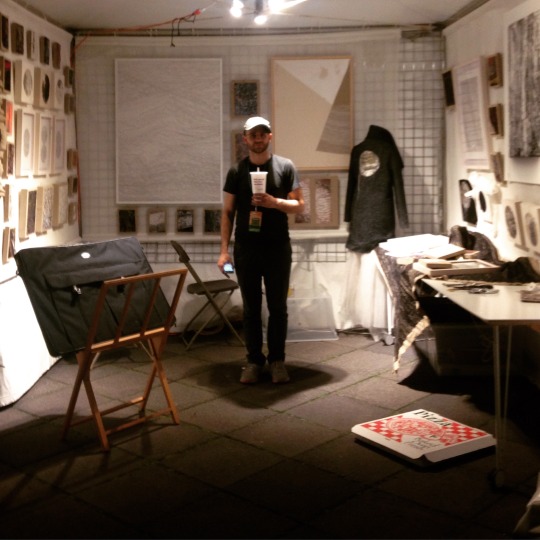
This is Terry Boyd // Emerging Artist for the Three Rivers Arts Festival and Best in Show Winner (2015) - below is his booth/display
Terry is a multi-platform artist who uses performance, pattern and fiber art, to explore the mind. His recent body of work employs both drawing and unconventional sewing techniques to create a visual “white-noise” that is meant to connect audiences to lost memories, forgotten dreams, and personal histories by allowing an access point to the unconsciousness. For him, the repetitive nature of the process serves as a visual mantra that triggers a meditative state. Removing the referent to the external world, these sewn abstractions guide the viewer back to the unending and elegance of the line, and invite the viewer to look inward for meaning.
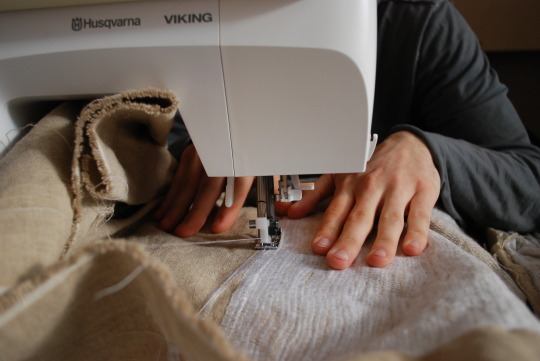
While working for Terry, I got to assist him in setting up a booth at the Three Rivers Arts Festival. The set up last until 1am but was so worth it. Terry was selected as an emerging artist by the festival, which provided him with a booth and enters him into the competition for Best in Show. I got to work at his booth on the first Saturday of the festival, right after it was announced that he had won. Three Rivers is one of my favorite things about being in Pittsburgh for the summer. It brings together the culture and creativity that is thriving in this city.
Being in Pittsburgh, I got to further explore the city with my friends from home. We attended one of the gallery crawls downtown, where my high school art teacher was featured as one of 8 painters to create a mural on a wall in a day. We brunched in Lawrenceville (if you haven’t been, you have to try Coca Cafe) and went out to dinner at a local winery about 40 minutes north of the city. Pittsburgh usually has a few large concerts during the summer so we saw J. Cole at First Niagara Pavilion (Nicki Minaj, Wiz Khalifa, & Jimmy Buffet also played at this venue over the summer).
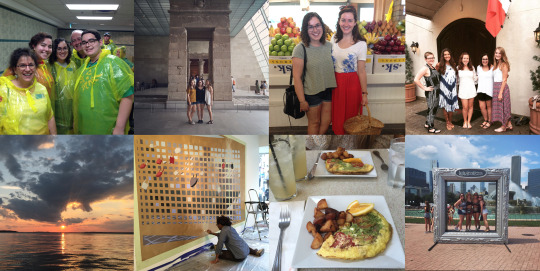
I took little trips along the East Coast (New York-New Jersey-Maryland), Cleveland, Niagara Falls, Chicago, & Hilton Head
In addition to spending time in Pittsburgh, I had the opportunity to take a few trips this summer. I spent a few weekends visiting friends, exploring cities and museums, and taking a few family vacations.
While the summer is almost over and everyone is beginning to return to Pittsburgh, I know that I’m happy with how the summer turned out and I hope you all did too! Can’t wait to see everyone so soon and continue on with Trusst in the fall!!
2 notes
·
View notes
Text
Miriam @ Doblin
Hey Guys. I’m Miriam a Senior Industrial Designer and secretly a Junior Communication Designer at the same time. It’s a long story… I interned at Doblin this summer in Chicago as a communication designer. Doblin is a innovation consultancy, owned by Deloitte which is one of the “Big Four” professional service firms.

So first some of the Doblin Basics:
Doblin has three general areas of practice: design, business, and insights (research). People with expertise in each of these fields are put together on a team for client work.
One of the cool things about being a designer here is that you are encouraged and expected to be involved in the other areas of work, so just because you're a designer does not mean you won't be involved in business or research. As an intern I was able to be involved in a lot of the research conversations and even got to fly to Dallas for a day to sit in on some user interviews.
Doblin generally operates at a "meta level" in their work. So they don’t design 2D or 3D products. They help clients understand their strategic thinking process while delivering research, concepts, and strategies.
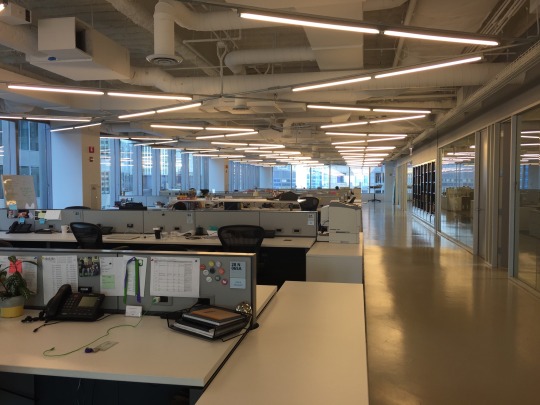
How I spent my time at Doblin:
For most of the summer I was on a client project, so I can’t really talk about the details of my work, but I spent a lot of time designing materials to explain our work to the clients. Everything from booklets to diagrams to icons to workshop experiences. I hadn’t done any serious work with icons since freshman year and all of the sudden I was designing icons for really complicated things that took me a while to understand. I feel like I could design an icon for anything now. Go ahead… Test me.
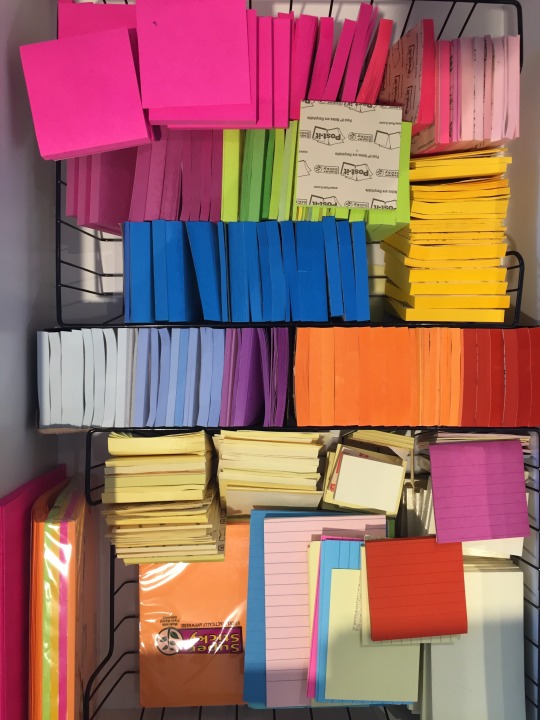
You can never have too many post-its.
Even though the work was different from the stuff we do at school in many ways there is one main truth that should always stand; as a communication designer you have to figure out the best way to explain something to someone else. So even though the audience is most likely a big executive instead of a professor or the general public you have to figure out the best strategy for explanation.
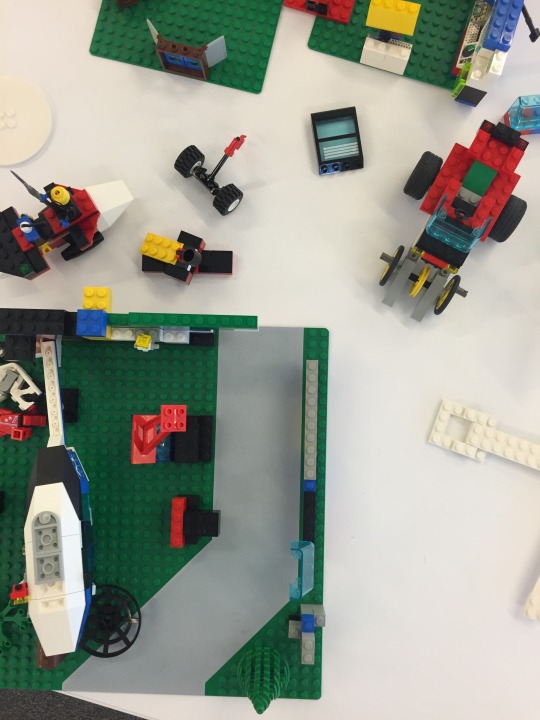
Every office should have legos.
This was the first year Doblin ran an intern program. Previously they only had a couple of interns each summer, but this year there were six. There was one other undergrad communication designer like me, three masters design students who were much more involved in design thinking than application of hard design skills, and another masters student in business. At first I was a little nervous because the other interns were so much older than me and had “real lives,” but I quickly learned to relax and they were really amazing resources to get a different perspective. We also worked on an intern project together, which became a great opportunity to take on some additional internal work while having some fun intern bonding.
Chicago was such an incredible place to spend the summer. It has the great things of a major city without all the craziness. A couple of us from CMU hung out on weekends and did everything from visiting museums, to going to food festivals, to watching a screening Edward Scissorhands in the park. I had a little apprehension about living in a new city, but it was a really amazing experience.

Overall the Doblin people were fun to work with and I had a really great time doing some different work than we normally get to do in school. If you have any questions feel free to shoot me an email.
2 notes
·
View notes
Text
Celine @ Artsy
Hello everyone! I’m a senior in the BCSA program, studying computer science and communication design (aka spending 90% of my time hunched over my computer). This summer I’m in New York City (for the first time!) as a design intern at Artsy.
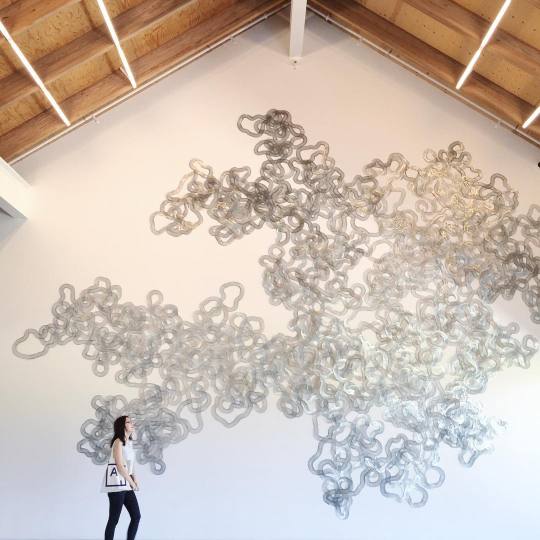
Me at a design team road trip to the Parrish Art Museum, in front of a Tara Donovan piece meticulously assembled from metal Slinkys.
Artsy is an arts technology startup that touches a little bit of everything in the art world. I knew very little about the art world on a historical, cultural, and commercial level before I started, so I’ve been spending lots of time talking to people at Artsy who are enthusiastic and devoted and experienced in the art world. It’s fascinating to dip into an entirely new context and begin to identify what makes people fall in love with art, and what kind of art I find most compelling.
Everyone at Artsy is incredibly welcoming, and very eager to talk about their role on the digital marketing team, art genome team, gallery relations team…it’s very cool to see the work that happens outside of design and engineering, and feel connected to everyone’s work and goals.
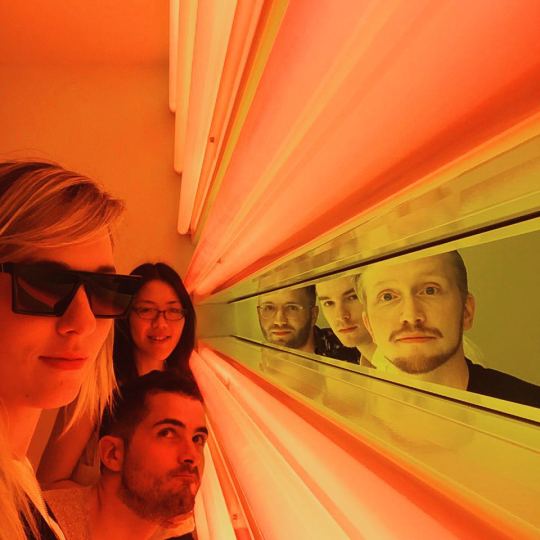
The design team at the Dan Flavin Art Institute (my mentor, Katarina, is on the left!).
What I’m doing
My summer has been 100% iOS design work (which I was introduced to during my internship last summer). I spent my first month redesigning the artist information views on the app, which let you learn about an artist and their works. I initially assumed this would be a more straightforward visual design exercise, but it produced some interesting problems:
Find a balance between the needs of different users. Artsy has users who are primarily interested in learning about art and exploring, and are not interested in buying art. Artsy also has users that do want to buy, and find commercially-oriented experiences more useful. These (occasionally conflicting) needs had to be navigated and balanced in the UX, and I would iterate between solutions that were more focused on learners, or more focused on collectors, to figure out a good balance.
Interpret a design across platforms. This seems so obvious, but figuring out how to translate particular interface elements across form factors and sizes (not to mention the different use cases for an iPhone versus an iPad) involved a lot of revision. I’d come up with a design that felt optimal on an iPhone but was poorly suited to an iPad, or I’d design something for the iPad and be frustrated by smaller screen of an iPhone.
The second point—interpreting a design across platforms—became even more critical during my second project, which involved designing parts of the auction experience in iOS. Art auctions are new territory for me, and involve very specific user needs, interactions, and events. I spent about a week and a half watching videos of art auctions, reading any books I could find about it in the Artsy library, and trying to understand the people and tasks I was designing for. It’s a substantially different experience from last summer, where I worked on the Google search app and designed for the widest possible set of users.
I ended up learning a lot about myself and my design process, and areas I can improve on as I head into my final semester at CMU:
Design systems, not screens. I found that I often siloed myself into a particular idea on an iPhone that wouldn’t work on an iPad, and I tried too hard to solve problems for the specific medium. It helped immensely when the other designers reminded me to step back and consider the overall experience a user should have, and make broad determinations on what my design goals were.
Interface animations are crucial, and are something I’ve never really worked on. I’d definitely like to find ways to develop my animation literacy, and understand better how to give subtle motion cues to the user. Many parts of the auction experience relied on getting the user’s attention at the right moment, and effectively transitioning between different UI states in a logical way.
The auctions project is the largest design project I’ve ever worked on, and it’s made me a lot stronger as an interaction designer.
Outside of work
Besides attempting to work out (no abs yet), I’ve been catching up on my reading list! I recently finished:
The ABC’s of Bauhaus, a design theory book by Ellen Lupton, which is typeset in a way that lovingly illustrates Bauhaus design principles and is generously illustrated.
Ancillary Justice, a sci-fi book by Ann Leckle, which explores some fascinating ideas about artificial intelligence and humanity and ETHICAL DILEMMAS IN SPACE!
The Timeless Way of Building, an architectural theory book by Christopher Alexander, which delicately and evocatively discusses how patterns exist in our natural and built worlds, and how to develop characteristic and timeless experiences. (Read if you took Semantics & Aesthetics and enjoyed it!)
Fingers crossed that, as we return back to CMU, I’ll carve out some more time to read and continue learning. It’s been a wonderful summer, but I’m excited to return again to Maggie Mo!
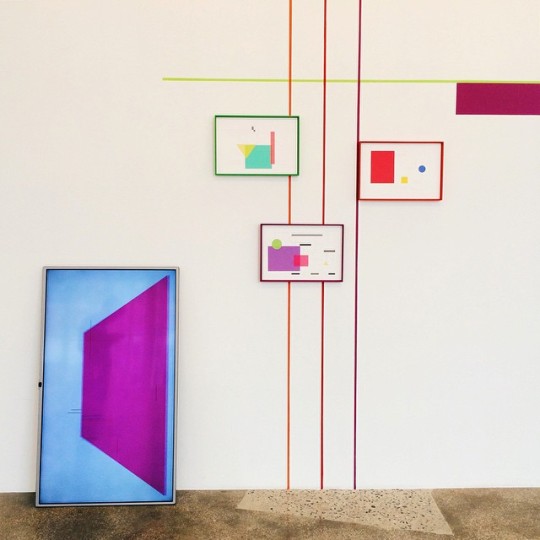
Partial photograph of Monika Bravo’s “Studies for musical notation", from an Artsy team offsite where we visited Mana Contemporary—one of my favorite artworks from this summer.
2 notes
·
View notes
Text
Adella @ Work
Happy Monday everyone! :D I’m Adella, a rising CD/ID sophomore.
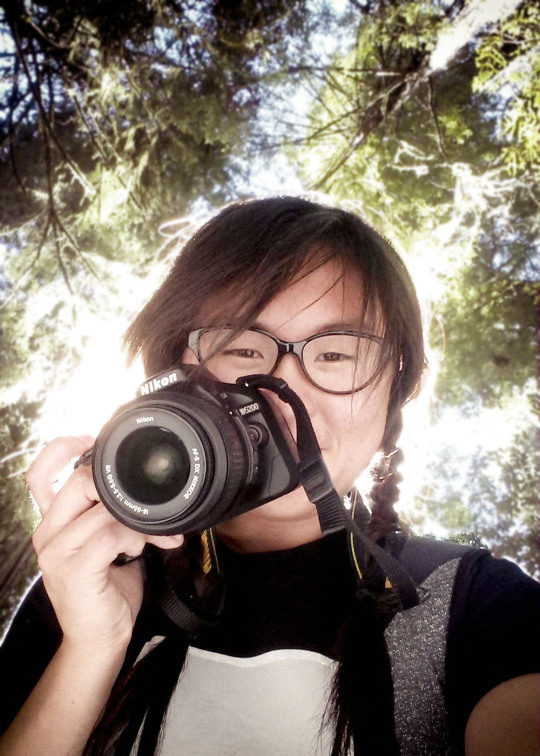
^Amongst nature’s tallest Redwoods
This summer I was determined to get better at drawing. I didn’t want to take an internship quite yet without first gaining more confidence in visual communication and notation. I took a visual communication class and the following are some things I have come to realize and learn about improving. I am obviously not the best drawer but I hope that you’ll be able to gain something from my experience.
1. Whenever I get frustrated with not being able to draw something and I’m on the brink of quitting, I always have to remind myself that improvement is a process. It’s important to look back to old “iterations” or drawings and celebrate the dedication and mileage you’ve made, no matter how insignificant. That way the idea of giving up when you’re frustrated isn’t worth it because you’ll never be able to find out what your potential is, or in terms of the design process that’s like settling for the early iterations of a product and never attempting to push through a problem or reinvent a better solution.
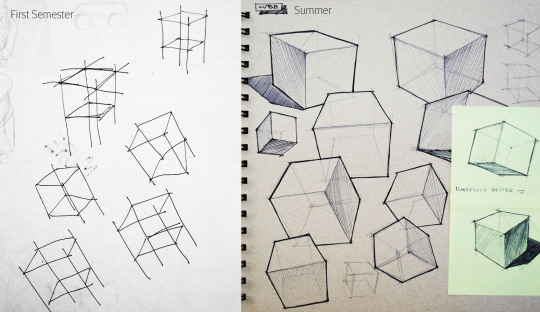
^Here’s the progression of my cube drawings from 1st semester to this summer. I legitimately drew cubes like the left in the beginning of freshman year because I completely didn’t understand how perspective, line weight, and shading worked.
2. Redraw things from time to time to check for improvement.
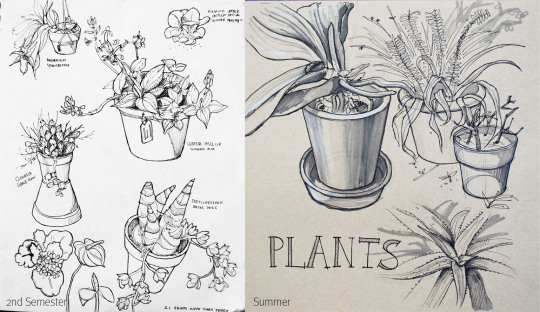
^Here’s a comparison between my drawing at Phipps Conservatory during 2nd Semester and some summer plant drawings. Better ellipses and construction lines can go a long way!!! 3. Constantly experiment and try to have fun with it. Borrow from those you aspire to draw like and make it your own.
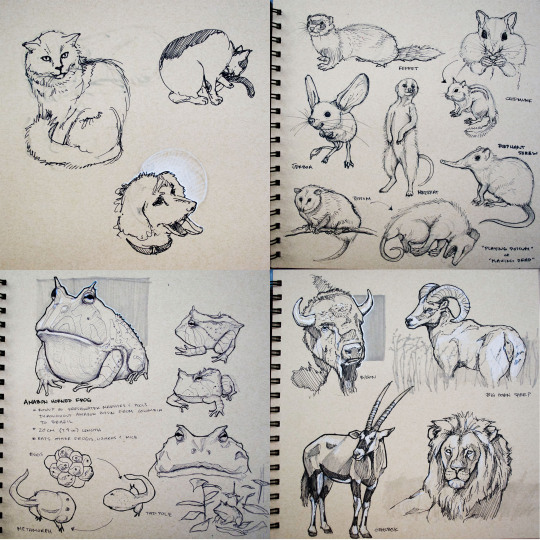
^I tried to draw these animals in different styles (gestural, structural, tone, white colored pencil, ball point pen, microns) in order to see what styles I was comfortable with and liked. 4. After taking a lot of time to get down the basics I was much more confident in letting my creativity explode and take me wherever :)
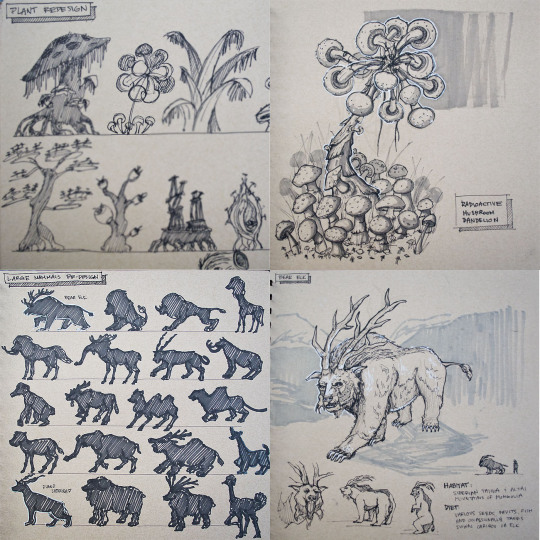
^When redesigning things, my class taught me a great exercise of drawing silhouettes so you think about the bigger picture and shapes instead of getting distracted with details. Then select something that you want to develop and run with it!
Overall I still have a long way to go but I’m excited to see how I can apply what I’ve learned this summer to sophomore year and hopefully to some future internships.
___
In addition to drawing I travelled with some friends and family, my roommate Deborah Lee (also in design) visited for a week, I experimented with editing photos, and I am currently learning python.
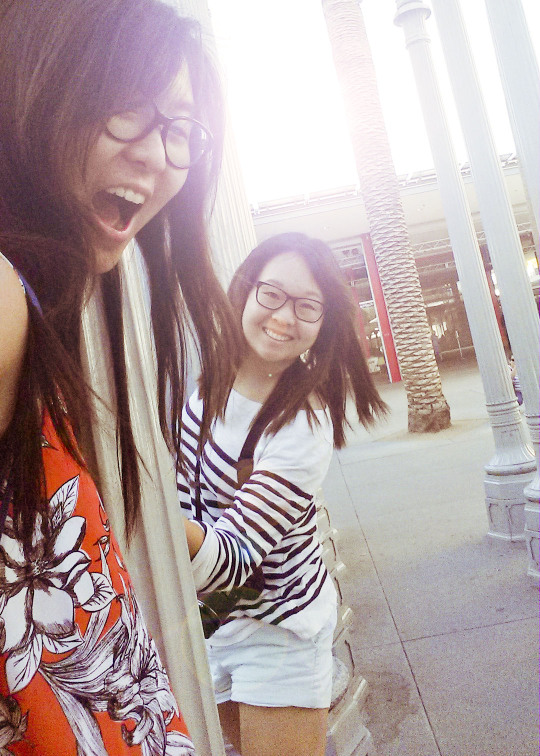
^With my roommate Deborah Lee @ LACMA
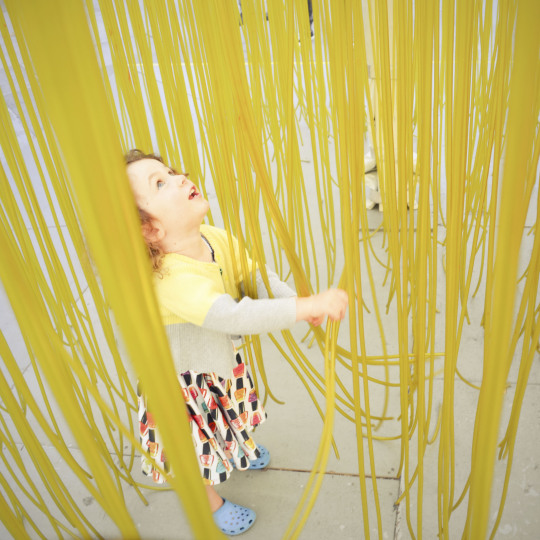
^Noodle Exhibit @LACMA
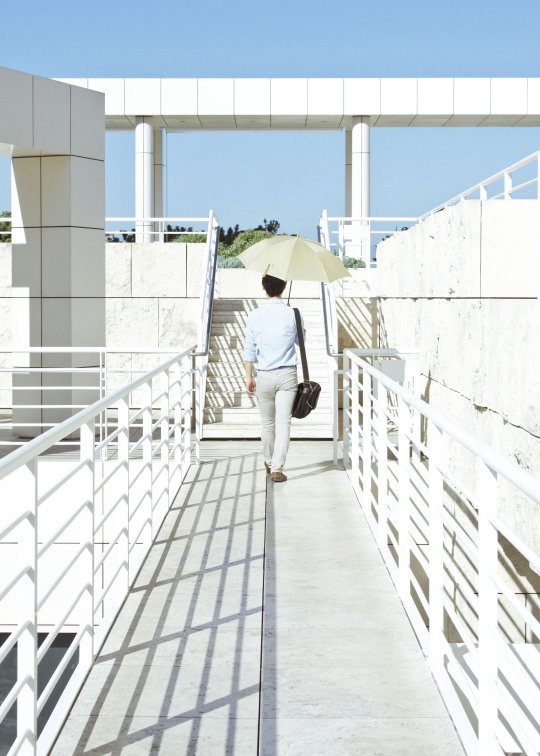
^Getty Museum
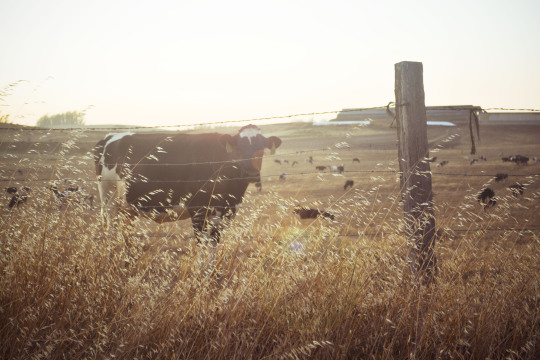
^Petaluma, CA
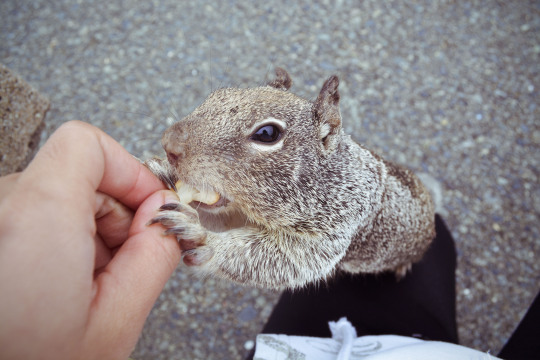
^A New Friend
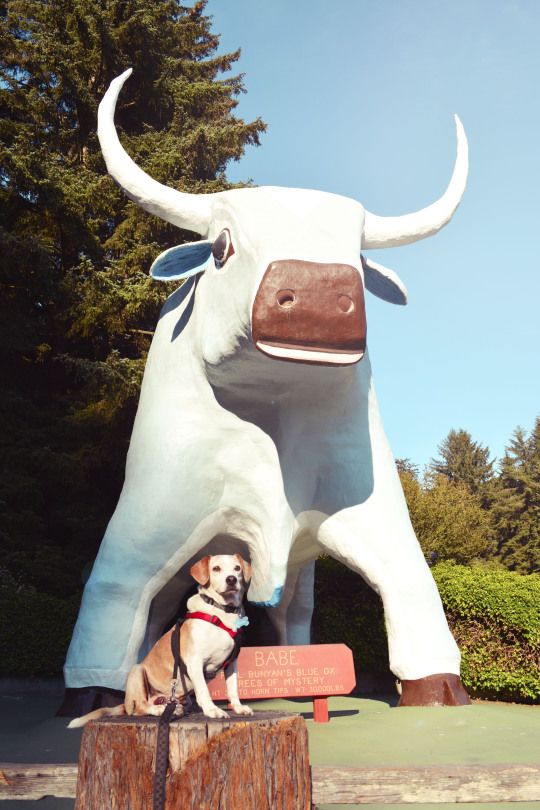
^My Cheagle, Lance @ Redwood National Park
Thank you so much for reading! If you have any questions, comments, etc please don’t hesitate to contact me :D
And with that I hope you all have a fantastic rest of the summer! See you soon.
#adella guo#carnegie mellon#communication design#industrial design#design at work 2015#summer 2015#design at work#design drawing#travels
168 notes
·
View notes
Text
Zii @ Fjord
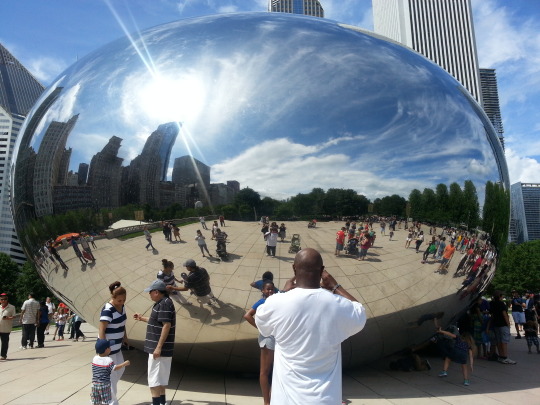
^ Let’s just get the touristy pics out from the get-go. Can you spot the CMU kids?
‘sup—I’m Yoon-ji (many of you know me as Zii), and I’m one of two rising CD seniors that is interning in Chicago for summer 2015. This is my final week as an intern at Fjord, and while this is not my first time in Chicago, I never had the opportunity to explore it to the extent I did this year, nonetheless live right in the heart of an urban city for such a long period of time. It has been quite the rollercoaster of an experience and I’m crushed that it went by so fast!
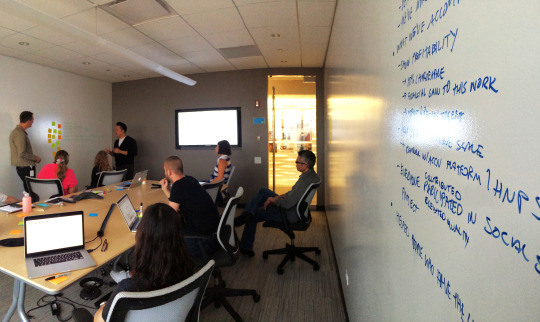
So what is FJORD? By formal definition, Fjord is a service design firm and consultancy in one; it is a company that is all about innovation that lasts, as well as design that has both a physical AND emotional impact on the clients’ consumers and the clients themselves. Going into a service design firm while having no background whatsoever in the field was absolutely intimidating at first, and the “OHGOSHAMIGONNABEABLETODOMYJOBRIGHTGAHPANIC” game was strong. However, I figured out pretty fast that there are a lot of design concepts that we learn at CMU that line up rather well with an actual service design education—it may just be that they call it something else. (Tip 1: When it doubt, just ask questions! No one is ever condemned for being willing to learn.)
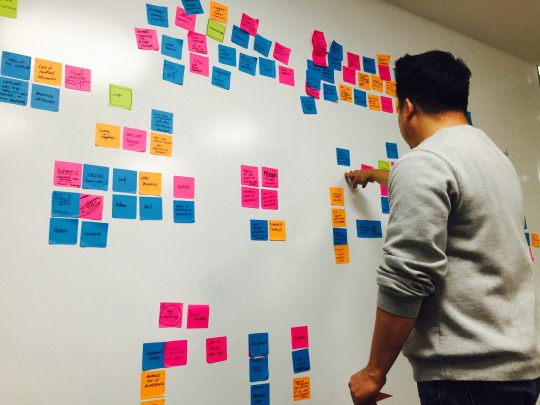
During the internship, I was given a project to work on with the other two design interns. Usually the interns would assist in various projects around the office for their program, but our supervisors wanted to change things up, and thought it would be more worth it to give us a chance to learn and go through the Fjord process—from research, to synthesis, to ideation and prototyping—as well as have a project we can completely own from start to finish.
Our client is a local non-profit that advocates for tenants’ rights throughout the Chicagoland area, who came to Fjord initially for ways to educate their tenants better, increase their outreach and awareness, and become a stronger, more influential voice to government and policymakers. While I will not go into details about the project here, I will mention a major takeaway (Tip 2): Never, ever bullsh*t research! It doesn’t matter whether your job title labels you as a visual designer (which was my title at Fjord), design researcher, UX designer, whatever—research is where the information and data you are working with comes from, and thus it is vital that you know it inside and out. We spent a lot of time researching and connecting with tenants, analogous organizations, and company staff, and did not stop until we felt like we had a thorough, holistic understanding of our client and its stakeholders. Not only does a large breadth of research help us better realize the scale of the project and the potential of the client, but it grows a type of passion in us for the project that is difficult, if not impossible, to attain otherwise. (Tip 2.5: Don’t take a nonprofit project for granted. Sure, it’ll come up a lot in school projects, and sure, it may not end up being “super sexy,” but what you design may be able to make a huge impact for the people that really need it. It is much more complex than people may assume, and a lot can be learned from a project like this.)
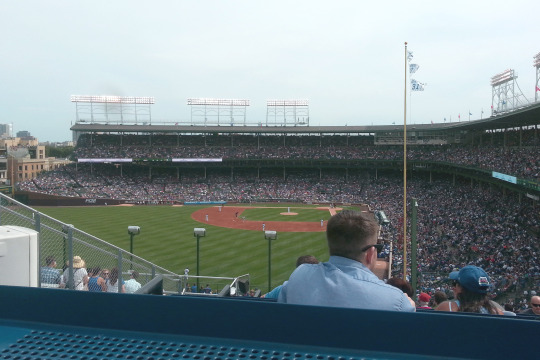
Apart from the intern project, there have been a couple of office events that we were graciously invited to, from Cubs games to volunteering opportunities to this leadership conference that was being held for all Accenture interns, where they brought in hundreds of interns from around the country to St. Charles, IL, to attend a conference where we were able to listen to Accenture’s leadership speak, learn to work and cooperate effectively within a team, and meet a LOT. LOTS. Of people. (Tip 3: I hated it when people always told me this, but really: Network. Networking is key.)
Also: What, Accenture? For those that don’t know, Accenture is a huge company that specializes in consulting, strategy, digital products, etc. The company acquired Fjord about 1.5 years ago and integrated it into its Interactive sector. Thus, Fjord interns are technically ALSO Accenture interns. Whaaat.
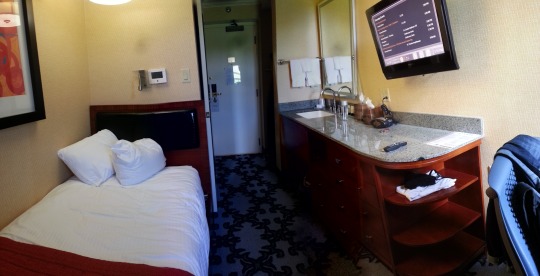
^ They gave each of us our own rooms! Still missing that bed to this day…
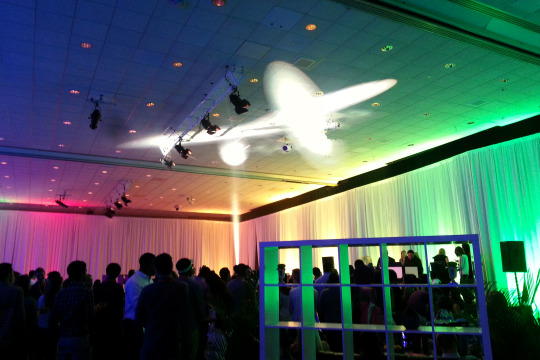
^ The final night, with casino games & photo booths & a DJ & these flashy lights. Corporate life goes hard.
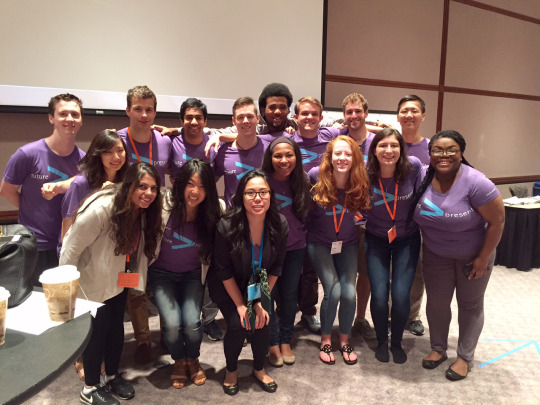
^ My team at the leadership conference; go Gang Green!
Overall, this internship has been a huge game-changer. Not only was I given a great opportunity to see a side to design I didn’t think would be so complex and get a better understanding of what sort of work I want to do post-graduation, but I was able to meet some amazing people who have varying passions but are all able to meet and collaborate effectively under the umbrella that is Fjord. I also got to know the goons of other interns immensely well, and am thankful to have clicked nicely with them. It’s not always easy getting along with a group of strangers, but we hit things off pretty swimmingly! The list of inside jokes is practically infinite by now, all the while being on top of our project to the point where it impressed our supervisors. NAILED IT. (Tip 4: Distractions are only bad if you make them bad. You can still be productive as long as you keep yourself in check.)

^ The intern team—our names varied from Trifecta to Derp Squad…among others
Cheers to having had a productive, wonderful summer! Thanks for reading—if you have any questions or would like more stories, feel free to hit me up anytime. See yinz soon!
0 notes